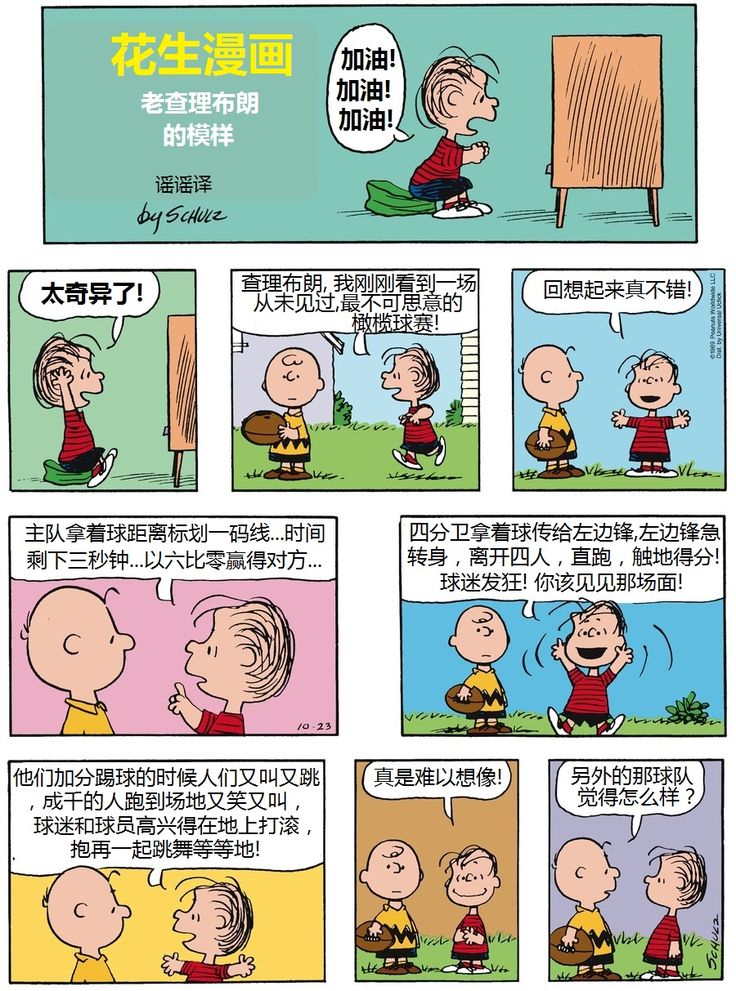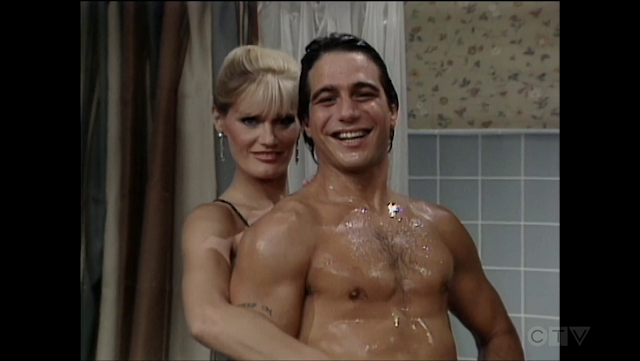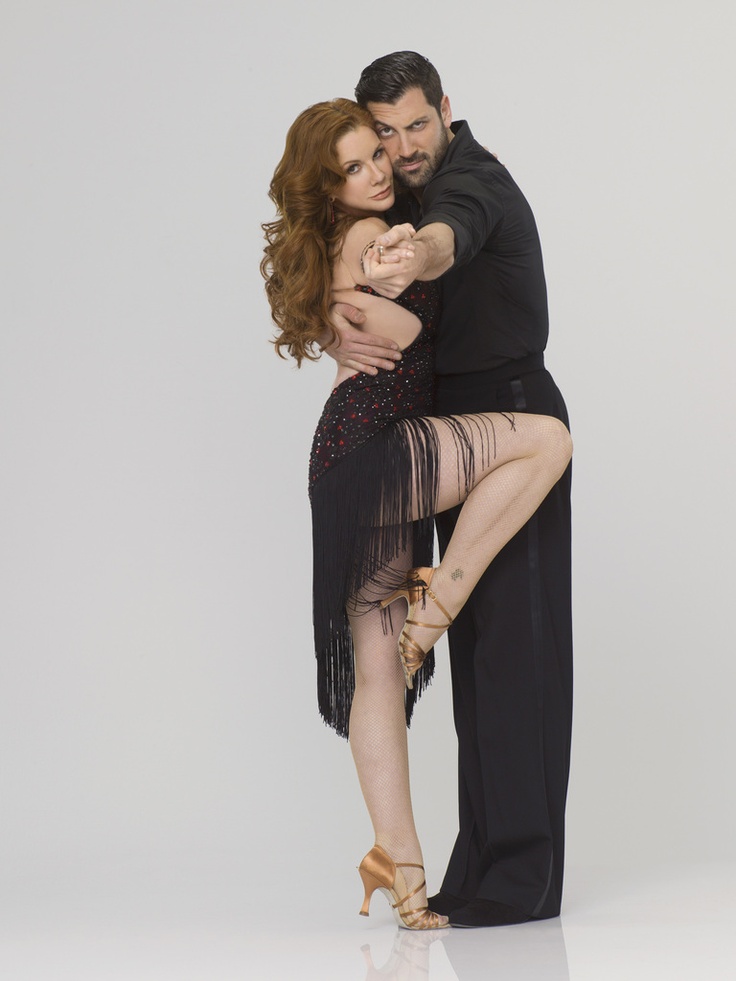How to dance the lindy
Lindy Hop | Bella Ballroom
Referred to as the “original” swing dance, the Lindy Hop has been enjoyed by many generations of dancers. It is characterized by fast rotations, swing outs and high-energy footwork. The Lindy Hop is the most iconic style of swing dancing and some consider it to be as popular today as it was in the 1930s.
History of Lindy Hop:
Lindy Hop swing dancing began in the 1920s and 30s in Harlem New York. Jazz music had become extremely popular in the United States during this time, and dance fads emerged as a result. Like most developed dances, Lindy Hop was born from the influences of a variety of dance styles. The Charleston and Tap were two of the popular jazz dances that heavily influenced Lindy Hop. The early stages of the Foxtrot were also included in Lindy Hop’s original styling. Lindy hop also grew from the blending of African rhythms and movements with European structured dance partnering. Remnants of older dances such as the Black Bottom, Cakewalk, Texas Tommy, and animal dances such as the Turkey Trot and Buzzard Lope influenced the Lindy Hop structure and movements.
Ballrooms dominated Harlem in New York City during the 1920s and 1930s, but there was only one that became famous for hosting swing dancing. The Savoy Ballroom became the place where Lindy Hop was fine-tuned, given a home base, and able to evolve. It was here that the “Savoy style” of Lindy Hop evolved. The Savoy was a very large ballroom. It took up an entire block at 141st Street and Lenox Ave. The Ballroom was very inspiring for dancers and was one of the few ballrooms at the time that allowed racial integration. The Savoy hosted 70,000 dancers a year and became known as the “home of happy feet.” The ballroom had an elongated shape with sprung floors that needed to be replaced every three years. A bandstand at each end of the ballroom allowed for two live bands to play every night, 7 days a week!
Lindy Hop social dancing became extremely popular. A night out dancing was affordable and Jazz fans were happy to go out to hear live music by big names such as Duke Ellington, Cab Calloway, and Count Basie especially since recorded music was not yet readily assessable. The musicians and the dancers would feed off of each other’s energy and improvisations making for a magical, spontaneous, and fun time. Dancers happily compared moves, participated in weekly friendly competitions, and invented new creative moves, including Aerials and lifts.
The musicians and the dancers would feed off of each other’s energy and improvisations making for a magical, spontaneous, and fun time. Dancers happily compared moves, participated in weekly friendly competitions, and invented new creative moves, including Aerials and lifts.
As Lindy Hop boomed, dance marathons became very popular and it’s because of one of them that Lindy Hop got its name. In 1927, Charles Lindbergh was going to take the first solo flight from New York to Paris. People were fascinated with Lindbergh’s “hop” across the Atlantic. At the time there was a great swing dancer by the name of George “Shorty” Snowden. He was at the end of a long dance marathon when a reporter watching asked what the crazy dance he was doing was called. He answered with a quick-witted response saying it was the “Lindy Hop.” The name stuck and is still called as such today. The Lindy Hop is considered to be the “first” swing dance and has inspired many of the other swing dance styles that came after it.
Lindy Hop Swing Dance Today:
Lindy Hop dancing is very much alive and celebrated today. Lindy Hoppers are known for their fun energy, down-to-earth sprit, and ability to have a great time. There are thriving Lindy Hop communities throughout the world and Lindy Hop can be found in nearly every large Westernized city.
In Orange County and Los Angeles, there are many mainstream venues that host Lindy Hop dancing. Many of these venues have no cover charge. The Disney resort in Anaheim hosts swing dancing at Downtown Disney and often hosts live bands playing danceable music inside the park as well. Expensive hotels, fancy bars, and restaurants are also known to host Lindy Hop and swing dancing. Joe’s Bar, the Culver Hotel, Rusty’s Rhythm Club, the Santa Monica Pier and Viva Cantina are a few venues in Southern California that host Lindy Hop music and dancing.
Lindy Hop dancing is also hosted at dance camps and dance competitions around the world. The small village of Herrang in Northern Sweden has unofficially become the international mecca of Lindy Hop because of their annual Herrang Dance Camp. Dancers from around 40 different countries attend this camp. This is one example of how Lindy Hop is celebrated on an international scale, in addition to being popular in smaller concentrated local city scenes. Lindy Hop dancers gather and interchange dance ideas and moves through the concept of Lindy exchanges on both local and international levels.
Dancers from around 40 different countries attend this camp. This is one example of how Lindy Hop is celebrated on an international scale, in addition to being popular in smaller concentrated local city scenes. Lindy Hop dancers gather and interchange dance ideas and moves through the concept of Lindy exchanges on both local and international levels.
Lindy Hop today is a social dance, a competitive dance, and a performance dance. Lindy Hoppers may dance alone or together and often use improvisation as a central theme when dancing. Lindy Hop’s upbeat and fun nature have allowed the dance to persevere and continue to be extremely popular throughout the world.
Lindy Hop Music:
- “All Shook Up” Elvis
- “Regular Joe” Indigo Swing
- “Wade in the Water” Eva Cassidy
- “Five Minutes More” Frank Sinatra
- “My Same” Adele
- “It Ain’t the Meat” Dana Gillespie
- “Stompin at the Savoy” Benny Goodman
- “Things Ain’t What They Used To Be” Charlie Barnet
- “Let It Roll Again” Nix Glover
- “On the Sunny Side of the Street” Ella Fitzgerald & Count Basie
- “Sing, Sing, Sing” Gene Krupa
- “One O’clock Jump” Count Basie
- “Stompin’ at the Savoy” Sonny Burke
- “For Dancers Only” Jimmie Lunceford
- “Jive at Five” Jo Jones
- “Shake Rattle and Roll” Big Joe Turner
- “Jumpin’ Jive” Ray Gelato
- “Rockin’ Robin” Bobby Day
- “Doin’ That Lindy Hop Dance” New Orleans Moonshiners
- “It Don’t Mean a Thing” Ivie Anderson & The Duke Ellington Orchestra
- “Dig It” Doris Day and Les Brown
- “Miss Brown to You” Billie Holiday
- “Swingin’ on Nothin” Jonathan Stout & his Campus Five feat.
 Hilary Alexander
Hilary Alexander - “Bugle Call Rag” Benny Goodman
- “Sugar Blues” Clyde McCoy
- “When the Saints Go Marching In” The New Orleans Jazz Band
- “Jumpin’ at the Woodside” Lester Young & Count Basie
- “Sugar Foot Stomp” Members of the Benny Goodman Orchestra
- “Shout, Sister, Shout!” Lucky Millinder feat. Sister Rosetta Tharpe
- “Cole Slaw” Louis Jordan
- “Crazy Little Thing Called Love” Queen
Fundamentals – Lindy Hop Moves
We will guide you through an easy learning experience and in a few months you will be ready to join the Intermediate Lindy Hop program to refine your technique and learn more advanced stuff. Stick with the program and we promise you are going to have so much fun learning.
Here is a list of “all” the fundamental moves lists on the Lindy Hop Moves website. However, if you want to take part in the Fundamentals Course, we will be publishing the course recommendation list soon.
Basic positions and weight changes Basic positions for Lindy Hop and weight changes for leaders and followers with the basic footwork.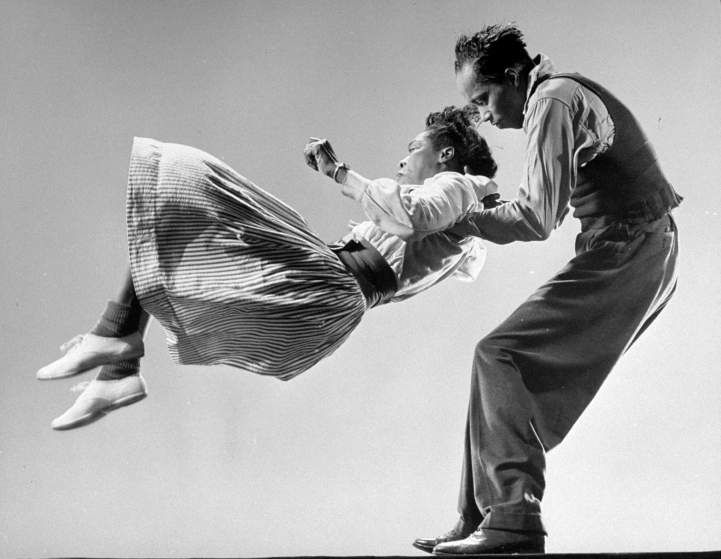 https://youtu.be/nd_UZhLmAtk Amy (follower) and Reuel (leader) teach the basic footwork of Lindy Hop: step, step, triple-step, step, step, triple-step. Plus ...
https://youtu.be/nd_UZhLmAtk Amy (follower) and Reuel (leader) teach the basic footwork of Lindy Hop: step, step, triple-step, step, step, triple-step. Plus ...
Fundamental posture & footwork Kevin and Jo explain the technique for the basic Lindy Hop footwork, posture and general positioning. https://youtu.be/0uj8iD2Oyag Leaders start with your left foot; followers start with your right foot.Footwork: the triple-step, the rock-step (also known as the ...
Basic footwork and simple patterns Beginner basic steps and footwork with a few patterns. https://youtu.be/rbxqTcKj2U8 Leaders make sure that you start your basic footwork with your left leg on count 1.Followers make sure that you start the basic with your right ...
Beginner basic movements and Lindy Circle Peter and Stacia show basic Lindy Hop movements with triple steps, a few basic moves, as well as the Lindy Circle. https://youtu.be/CF0KIsQR6A4 The video starts with the footwork of the basic 8-count rhythm and then ...
https://youtu.be/CF0KIsQR6A4 The video starts with the footwork of the basic 8-count rhythm and then ...
Basic 30s Charleston and Kick Through Bobby and Crista show the basic of the Charleston side by side and how to do the Kick Through. https://youtu.be/dPjS6QVqltk The video starts with basic Charleston (groove walks), with the addition of the kicks to ...
30s Charleston, Skip up (a.k.a Kick the Dog) and Kick Through Peter and Liz show the basic Charleston as well as the Skip Up and Kick Through. https://youtu.be/Cg0mTrMlc94 The video starts with the basic (Groove Walk) starting with a Touch-Step. Then ...
Lindy Hop basic figures and technique Jean and Bromley show 8-count footwork moves. https://youtu.be/pnWF9Lb7QaU In this video you will find a basic 8-count figure in closed position, the Toss-Across (also known as the „kompis“), the Swingout from closed, the Promenade and .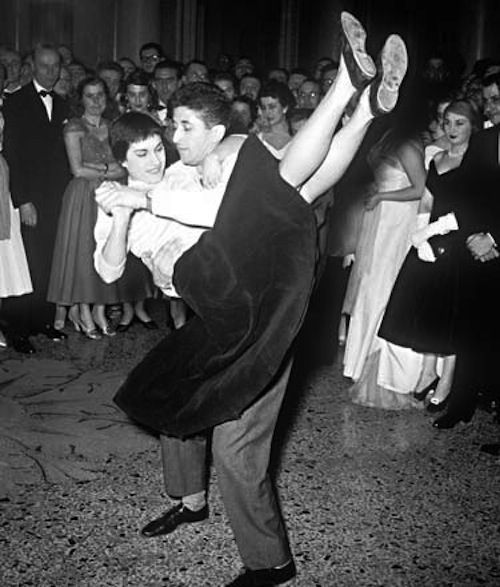 ..
..
More Lindy Hop basic moves and technique Manu and Ann show the basic 6-count rhythm with triple steps and some basic figures: https://youtu.be/BavaDEeN-Zc In this video you will find the basic 6-count in closed position, a Send-out, the basic 6-count in ...
Fundamental 6-count rhythm and basic moves Peter Strom and Stacia show the basic 6-count rhythm with a few basic moves. https://youtu.be/USXmK5QXwCc The video starts with the basic 6-count but without triple steps: the “rock step, slow, slow” rhythm in side-by-side position. ...
Basic 6-count moves with different rhythms Peter Strom and Stacia teach the basic 6-count rhythms: first groove-walking it (also known as the “slow” rhythm), and then adding the triple step. https://youtu.be/uDARWpHsF-Y The video starts with the basic 6-count but without triple ...
6-count rhythm basics and more moves Nicole and Kirk from The 920 Special show the basic 6-count rhythm with triple steps and a few moves. https://youtu.be/Fd7UIOM6wqA Review of the basic 6-count rhythm with triple steps. The moves in this video are: Basic ...
https://youtu.be/Fd7UIOM6wqA Review of the basic 6-count rhythm with triple steps. The moves in this video are: Basic ...
Send out from closed Audun and Charlotte show the finer details of the “send-out” move. https://youtu.be/EHubFEiS4tk Follow the instructions in the video. Attention: in this variation of the “send out” the leader starts with a forward rock-step on count 1 instead of ...
Lindy Hop 6-count figures Manu and Ann from The 920 Special show a few more 6-count figures with triple steps. https://youtu.be/91FZSR9wQKk The moves in this video are: Inside turn into closed, Underarm turn where the leader turns also (a.k.a. She Goes ...
Review of fundamental 8-count moves Peter and Stacia show some basic 8-count Lindy Hop moves with triple steps. https://youtu.be/rfUdoXikhMc The moves in this video are: the Nothing, the Flip Flop, the She Goes (a.k.a. the Slingshot), the He Goes, the Lindy .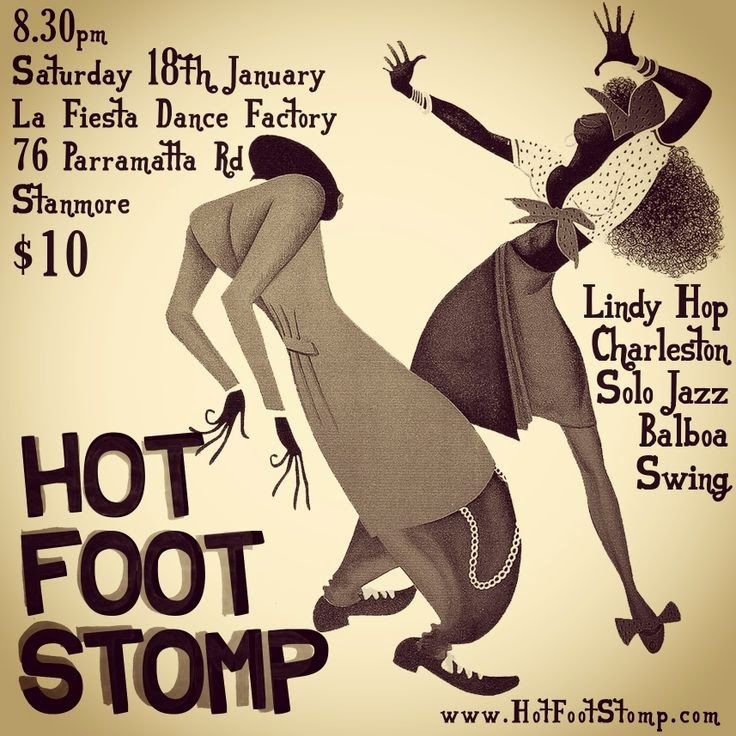 ..
..
Double tuck turn from closed Audun and Charlotte show the double tuck turn from closed position. https://youtu.be/qgDbEWh5vtE Follow the instructions in the video. The move in this video is the double tuck turn from closed position (a.k.a. the double spin). This is ...
Swing out footwork for leaders Kenny shows the solo leaders footwork in the swingout. https://youtu.be/dtFRfucbNiA Follow the instructions in the video. – The swingout is the most famous move in Lindy Hop so make sure you practice your solo footwork alot. Teacher: Kenny ...
Swing out Technique Marcus and Janie show the basic Swing Out. https://youtu.be/88xB7bmia4Y In this video you will find the basic footwork for the Swing Out move. The Swing Out is always an 8-count move. Attention: at 1min45sec in the video, the focus ...
Basic swing out review David and Cátia show the basic swingout a fundamental move in Lindy Hop.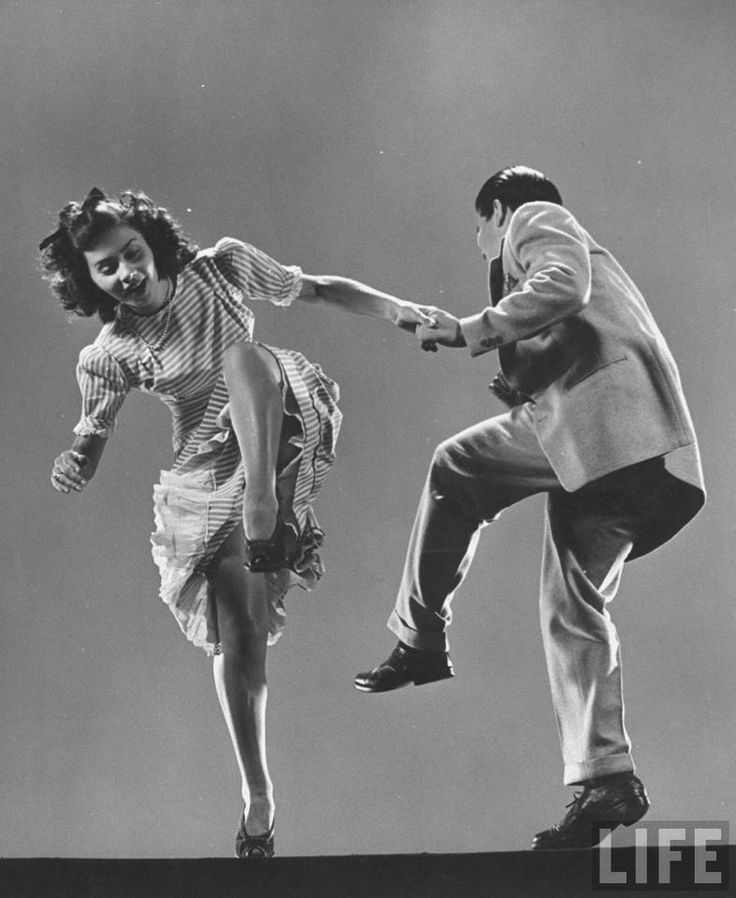 Follow the instructions in the video. The swingout is the most famous figure in Lindy Hop but is also quiet complicated so take your ...
Follow the instructions in the video. The swingout is the most famous figure in Lindy Hop but is also quiet complicated so take your ...
Swing Out from open position Patrick and Natasha show the Swing Out from open position leading the follower forward on count 1. The first part of the video focuses on doing underarm turns where the follower does not start with ...
Lindy Circle & Swing Out Kirk and Nicole review the Swing Out and the Lindy Circle. Lindy Circle from closed, Swing Out from closed, Lindy Circle from open. These are the classic all-important 8-count moves that every Lindy Hopper needs ...
20s Charleston with Variation Daniel and Gabriella show the 20s Charleston basic front-to-front as well as variations. Leaders: in the basic front and back 20s Charleston face-to-face, make sure that when you touch back on count 1 with your left ...
Tandem Charleston basic Spencer and Jessi show getting into the Tandem basic and how to get out.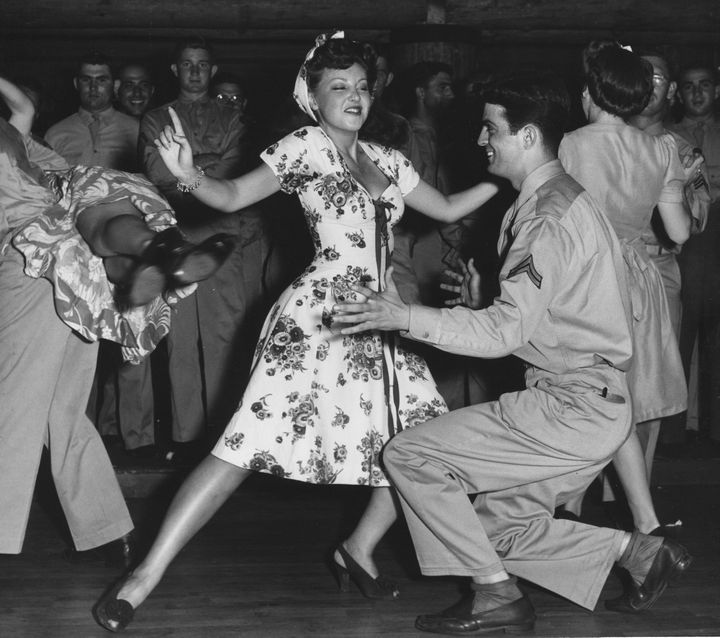 In Tandem Charleston, both the leader & the follower start their basic 30s Charleston by rock stepping back on the left leg. So ...
In Tandem Charleston, both the leader & the follower start their basic 30s Charleston by rock stepping back on the left leg. So ...
Swing out from open position Kirk and Nicole show a swingout from open position. At this point you should start to mix these following moves together. The moves in this video are: – Lindy Circle from closed position. – Swingout from closed position. – ...
6 count variations Peter and Liza show some 6 count variations. http://www.youtube.com/watch?v=yY_xBdk4d74 The moves in this video are: – Crosshand Inside free turn. – Crosshand Inside turn. – Crosshand Inside turn to sneaky position. – 6-count to catch the hip bone. – Tuck turn out. Note for ...
Swing out with Outside Turns and Swivels Audrey and Brian show a Swingout with an Outside Turn and Swivels for the follower. The moves in this video are: – Swingout with Outside turn free spin. – Swingout with Outside turn (regular). – Swingout ...
– Swingout ...
Triple step rock steps and turn drills Kenny and Abeth show some drills to practice your turns. The moves in this video are:– Rock-step triple-step rock-step triple-step (back and forth).– Rock-step triple-step rock-step triple-step (back and forth) with turns.– Rock-step ...
More important Swing out technique Ann and Kirk show some good technique points regarding the Swingout. https://youtu.be/bv_Xsyy3uAY The moves in this video are: – The Toss Across.– 6 count Side Pass.– Swingout from open position.– Lindy Circle from open position.– Lindy Circle ...
Swing Dance Partnering Ali and Katja show how to lead and follow direction changes in Charleston rhythm. Here Ali and Katja show how the leaders lead changes of directions in side by side position with basic Charleston footwork (also known ...
Left Side Pass Ali and Katja show the left side pass. https://youtu.be/6VfOAW2wbQs Important Notes:– Make sure that you keep the hand hold stable in the middle in between the leader and the follower.– Leaders lean in the direction you want your ...
https://youtu.be/6VfOAW2wbQs Important Notes:– Make sure that you keep the hand hold stable in the middle in between the leader and the follower.– Leaders lean in the direction you want your ...
Hand Hold in Swing dancing Ali and Katja show a common and very comfortable hand hold that is used in Swing dancing. https://youtu.be/3cFPrQWFit8 Notes:– Leaders make sure that you never crush your followers hand.– Followers make sure you never hold on ...
How to Lead Triple Steps Ali and Katja show how to lead and follow triple steps in side by side position. https://youtu.be/ZFVC01Sitvg Notes:– Leaders to lead a triple step in side by side position make sure that you lean slightly in ...
Swingout Clinic Peter and Stacia go through some important points regarding the Swingout. The Swingout is one of the most important moves in Lindy Hop and all dancers from beginner to advanced continously work on making theirs better and better.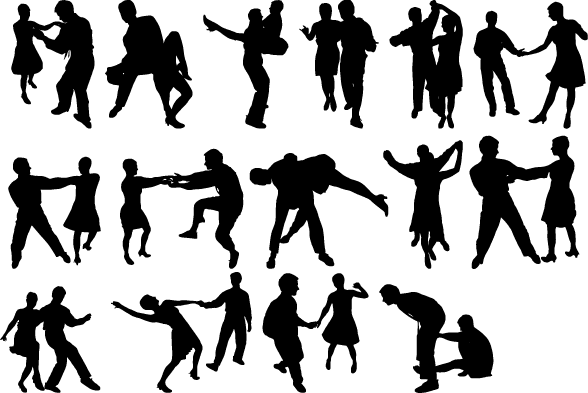 Make ...
Make ...
Swivels Michelle and Doug show the followers Swivels on a swingout. This is one common way of doing the Swivels also known as the twists. The Swivels are the most famous followers styling in Lindy Hop and there are many ...
Swing Summit 2013 Competition Demo Here is a short video to demonstrate how an instructional video could look like. To find out more about how to win a free couple pass to Swing Summit 2013. A Lindy Hop dance camp ...
Basic Swingout David and Cátia show the basic swingout a fundamental move in Lindy Hop. https://www.youtube.com/watch?v=R1x_vWBZCNo Follow the instructions in the video. The swingout is the most famous figure in Lindy Hop but is also quite complicated so take your time going ...
Lindy Hop Basket Kenny and Delilah show a move called the Lindy Hop Basket. Follow the instructions in the video. – This lindy hop basic is a great progression pattern for leaders and followers. – Leaders make sure you don’t pull hard ...
– Leaders make sure you don’t pull hard ...
Follower’s Swingout Footwork Jesse shows the footwork for follower’s in a swingout. Follow the instructions in the video. – The swingout is the most famous move in Lindy Hop so make sure you practice your solo footwork alot. Teacher: Jesse Hanus http://www.jessehanus.com Next Move Previous ...
Basic Tandem Charleston Kenny and Jesse show the basic Tandem Charleston. https://youtu.be/bN06_QrEstc Follow the instructions in the video. – Tandem is often also known as Shadow Charleston, Back to Back Charleston, Back Charleston.– You will learn more about how to get into ...
The Basic Collegiate Charleston Footwork Demonstrated by Hayley & Kibble https://youtu.be/tBfvwhDg7ug The 1930’s Collegiate Charleston Footwork Basic taught in 5 minutes. Teachers: Hayley Anne Watson & Kibble If you are totally new to the swing scene you can check out the Comprehensive free .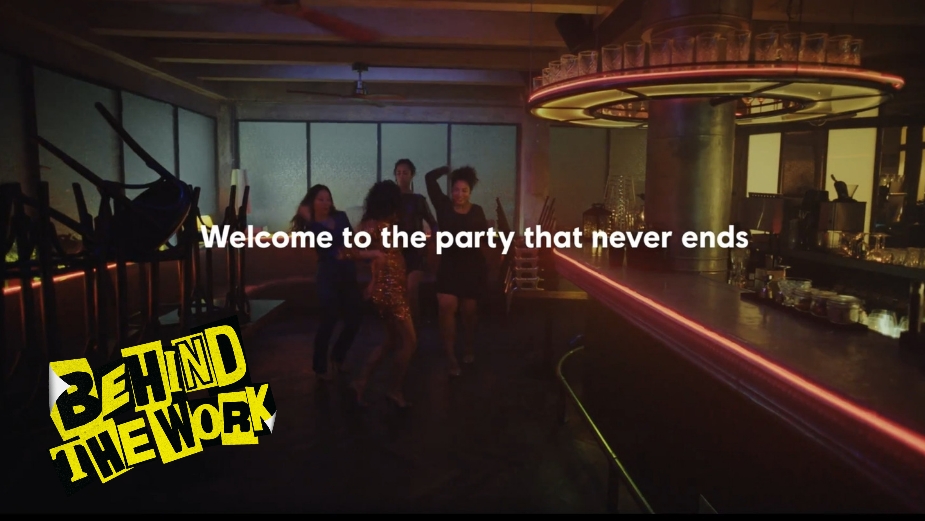 ..
..
Six Count with Triples Basic Step Demonstrated by Hayley & Kibble https://youtu.be/ZkkPdc8kyuc Six Count with Triple Steps – Footwork Basic taught less than 4 minutes. Teachers: Hayley Anne Watson & Kibble If you are totally new to the swing scene you can check ...
Eight Count with Triples Basic Step Demonstrated by Hayley & Kibble https://youtu.be/iof7JCqWZZE Eight Count with Triple Steps – Footwork Basic taught less than 5 minutes. Teachers: Hayley Anne Watson & Kibble If you are totally new to the swing scene you can check out ...
If you feel like you already know this material you can jump to the intermediate lindy hop course.
How to quickly teach Lindy Hop, or how dancers breed
-
-
-
21
MAY
-
- How to quickly teach Lindy Hop, or how dancers breed
Another article on our website was not written by Peter Loggins, but by a no less talented and wonderful dancer Jamin Jackson .
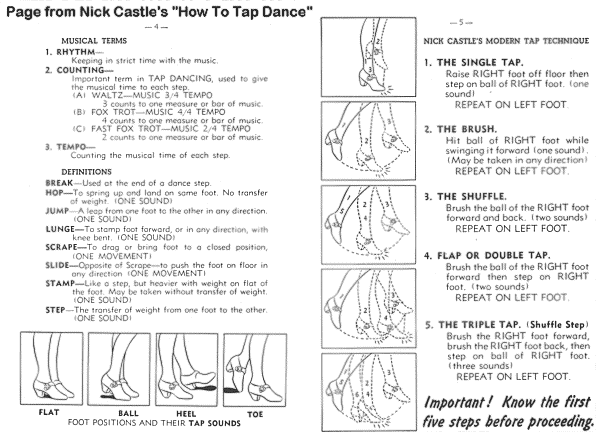 The article reveals ideas, thoughts, concepts in teaching Lindy Hop by Jamin. It will undoubtedly be interesting and useful both for those who are just learning the Lindy Hop and for those who are learning this dance. Swing Dance School presents to your attention the translation of the article:
The article reveals ideas, thoughts, concepts in teaching Lindy Hop by Jamin. It will undoubtedly be interesting and useful both for those who are just learning the Lindy Hop and for those who are learning this dance. Swing Dance School presents to your attention the translation of the article: "How to quickly teach Lindy Hop, or how dancers breed"
Everything starts small. We all know that easy paths to success are for the lazy. But we all need that way sometimes. Especially for those who do not have enough time to play the fool - and this is generally not bad.
In dance, as in life, there are fundamental principles on which everything rests. You can just look, or you can see through. So, get ready to look beyond the veil of complexity.
My goal is that after reading this article or my lesson, you will see yourself as a master, a beginner master. I present to your attention my "method of breeding lindy hoppers".

Below I present my experimental method, my vision of what Lindy Hop is at its very core. You will learn about the methods I use to help everyone who dances the Lindy: both students and teachers.
When you focus on the right principles, you will learn faster - and give up unnecessary expectations. Trust me, I wouldn't be able to attend over 105 dance events and spend 2,500 hours teaching Lindy Hop if I didn't focus on the principles.
If you understand these principles, you will free yourself from the unnecessary, and this will help you learn correctly and, most importantly, effectively. If you focus on the rules, you will want to break them. And often you break them in the wrong way, for the wrong reasons, and you lose the fun of the process.
In my lessons, I first of all talk about my expectations and what it means to learn to dance. I compare my students to young doctors who are practicing - and my partner and I help them with this.
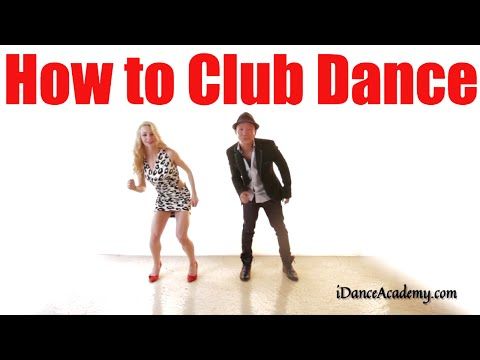
I want them to stop seeing us as overseers. We are the ones who help them to be more effective in real life, and when they "graduate from med school" and are left to their own devices, they will not kill anyone.
The next step is to teach them to do simple things without thinking and not be afraid of it. It's complicated. We are usually taught that first you need to know, and then do . And this is contrary to reality. It's like an invisible barrier in the mind that prevents you from achieving mastery. Keeping it simple is the key to success, and it's hard if you lack understanding.
I like the following analogy: swing has three foundations, pillars, fundamental principles. All three are necessary, and if one support is removed, it will be very difficult to learn and teach Lindy Hop. Knowing about these three things is a must - about how to take a shower every day.
In addition to these "three pillars", each category has many more optional subcategories - for example, you can, but do not have to do a massage every day.
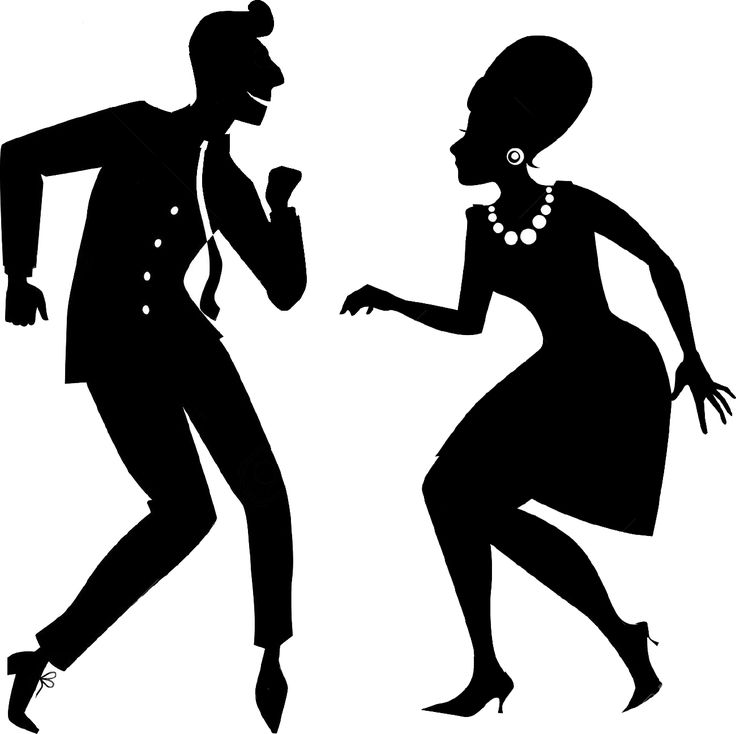 It's for someone who likes it. Below I list these "pillars" strictly in order of their importance.
It's for someone who likes it. Below I list these "pillars" strictly in order of their importance. First, rhythm. Rhythm is the basis, the foundation, like a building: it must be stable and support the whole structure.
Different people understand this word differently. When I explain to someone how to quickly learn Lindy Hop, I have to show what rhythm is so that they understand me correctly, and build on this in the future. You can watch video:
If I do not explain what I mean by the word "rhythm", then the student can imagine anything. Someone will imagine a clay foundation or gravel - I mean concrete.
If I do not explain what I mean, it will be impossible to follow my principle of simplicity and straightforwardness, and a hail of questions asked in a nervous atmosphere will rain down on me.

So I'm showing you what rhythm is with two instruments that will help them navigate the rhythm easily (it just takes a little practice). First, a hammer. I usually talk about him after the students have learned rock-step.
Here is the video:
Second, the nail. I talk about him when they understand and start doing triple steps. See how simple:
Beginners usually ask a thousand questions, just like seven-year-olds. After that, we all join hands and stand in a circle and try to dance to the rhythm. Rock step, triple step, rock step, triple step.
Of course, everyone gets confused, but they try very hard, because we all hold hands and depend on each other. Videos:
Did you complete this exercise? People had fun, everyone smiles? Victory! They are already on the way to mastery, although they themselves do not suspect it. Small victories lead to big successes, small failures lead to big failures.
Our next foundation, fundamental principle is dance figures .
In the context of swing dances, we perform “figures” when a partner and a partner interact with each other.
As practice shows, almost all students will pay more attention to figures than to rhythm. I repeat to my students many times that rhythm is more important than figures. The figures must fit into the rhythm. Here's an illustration of why you shouldn't focus on shapes in the first place:
Before we pair up, each of us is a separate, independent dancer.
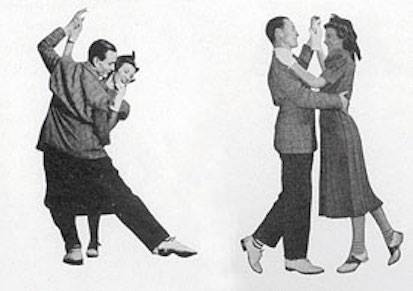 After we have united, we are a whole, within which energy is redistributed in a certain way. We move and execute figures. And that requires clarity of purpose.
After we have united, we are a whole, within which energy is redistributed in a certain way. We move and execute figures. And that requires clarity of purpose. As if two people are united into one. But as soon as they unite and start moving, it turns out that they have different tasks.
The partner controls the behavior of the whole and creates energy.
Partner receives energy and moves until it runs out, or until something changes.
I keep emphasizing the importance of this idea when we have learned the basic patterns and are going to bring them to life with rhythm.
When we consider both roles from this point of view, it is clear that the dance depends on and on the partner, because it is she who controls the energy received. If she doesn't move, that's it, the dance is over. It doesn’t matter how a smile shines and how talented the partner is, how much he can do - the dance ends or begins at the will of the partner.
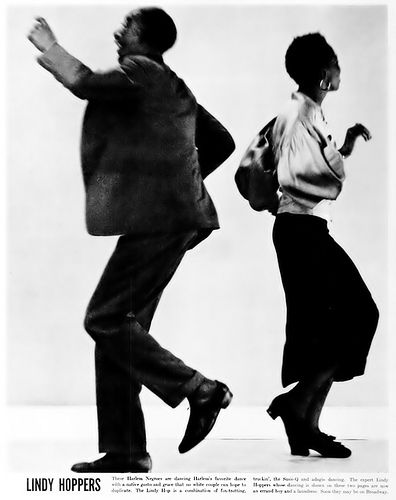
To agree is much easier than to balk and stop. If a partner understands this life principle, she will know what to pay attention to in the classroom. Usually a partner hears a lot of theory about how to lead, but actually learns to lead herself. After all, she knows in advance what a partner should do.
And this makes it very difficult to grow. So you need to help partners focus on what they can really change, and in the future they will improve easily and naturally on the dance floor, already by themselves. When partners understand this idea, classes become more productive. Partners independently correct their own mistakes and learn to delegate responsibilities.
And if this is not explained in time, then the partners ask questions that partners should actually ask. And students misunderstand the basics and their role in the dance.
From my personal experience - I will now list the most important skills for partners that can be taught in the classroom.
 As soon as the partners understand them, they will immediately begin to correct their own mistakes. Although it will take some time to reach perfection.
As soon as the partners understand them, they will immediately begin to correct their own mistakes. Although it will take some time to reach perfection. Partner skills require more time to learn:
- Hold your torso over your feet to rock and triple-step exactly to the beat.
- Do not create the energy yourself , accept its partner, absorb and move accordingly.
- Hold the rhythm! You will feel the force of gravity, it will be easier for you to control energy and follow steps clearly.
- Walk in a straight line , moving according to the received energy.
Here is a set of tools that should be taught to a partner in the classroom, and then she can continue to learn on her own. If you focus on always following these rules, you will grow. If you focus on achieving a certain result, instead of improving your partner’s skills, you will think like a partner.
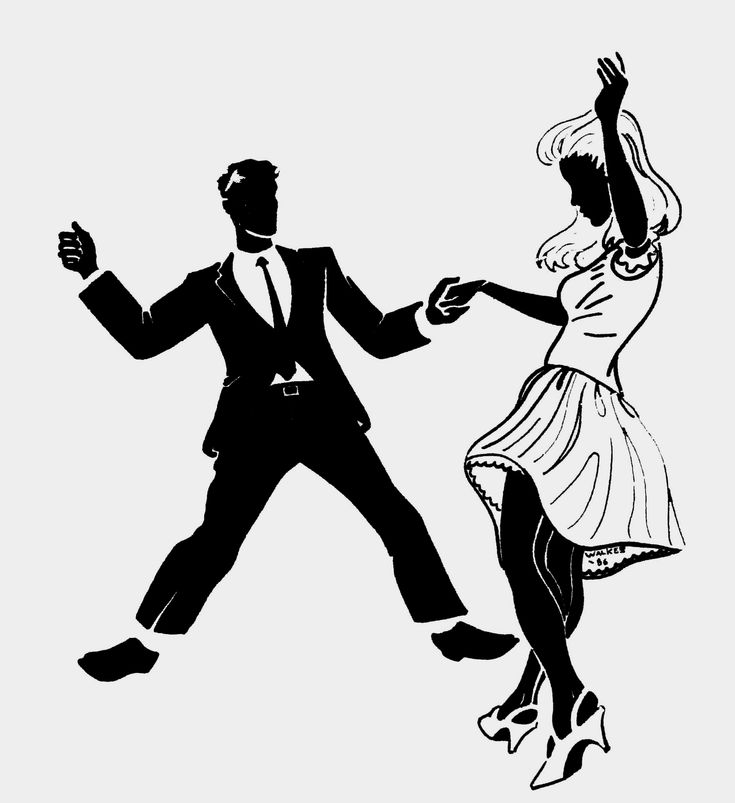
Focus on your condition, not where you need to go. The partner should take care of this.
Failure to comply with any of these principles leads to the fact that it becomes difficult to transfer energy within a couple. Partners have to protect their partner, not dance with her.
Different people express certain ideas in different ways. Again, everything I said is my effective approach . These are fundamental principles that allow you to absorb energy, move in accordance with it, until it fades or the situation changes.
Some argue about the importance of these principles and remain silent about how capable they are of themselves.
If someone talks more than they do, it means that they are afraid to act according to extremely simple instructions.
They know how to say that everything is wrong and wrong. They do not know how to do it simply and correctly. This is fine. Do you want to be among those who quickly learn to dance by doing simple things and improving over time? Like children who are learning to walk, although they cannot read about it or have a discussion about it.

Yes, there are many little things, nuances... and they are a continuation of the main principles: they cannot replace the basics. Don't waste a second on theory, discussion of meaning, or argument. It is easier to give birth than to resurrect a baby. Do you need to learn fast or slow? Just put my conclusions to the test, or teach these principles to a beginner and see how quickly he progresses.
As for partners, there are completely different principles:
- Communication should be clear and painless . This paragraph is about freedom and what can be done. Look for what you can do, not what you can't.
- Wait for the reaction of the partner after you led her. This will make it easier for you to understand how you transmit energy, and over time you will become better at managing it.
- Learn to move exactly to the beat on rock and triple steps. These are the very basics.
 Then you will grow, avoid repetition, and this will result in variations, features of your unique style. For example, it will be different intensities, stretches, syncopations, slides ... and so on.
Then you will grow, avoid repetition, and this will result in variations, features of your unique style. For example, it will be different intensities, stretches, syncopations, slides ... and so on. And again, I emphasize that you need to start painlessly, easily, but you will have to improve the ability to clearly, clearly communicate your intentions to your partner. Time will pass, and you will feel that the couple is a single organism of two people. A partner is not a thing that you control. She is part of you, and you should treat her the same way you treat yourself.
The partner is responsible for establishing contact. So it's very important to understand the partner you're dancing with. And you can understand your partner, leaving her space for self-expression. If she is talkative and you don't let her talk, she will interrupt. If she is closed off, and you constantly give her the right to speak, you will get awkward pauses. In any case, you will have to adapt to your partner and understand that the partner is responsible for starting a conversation and establishing contact.
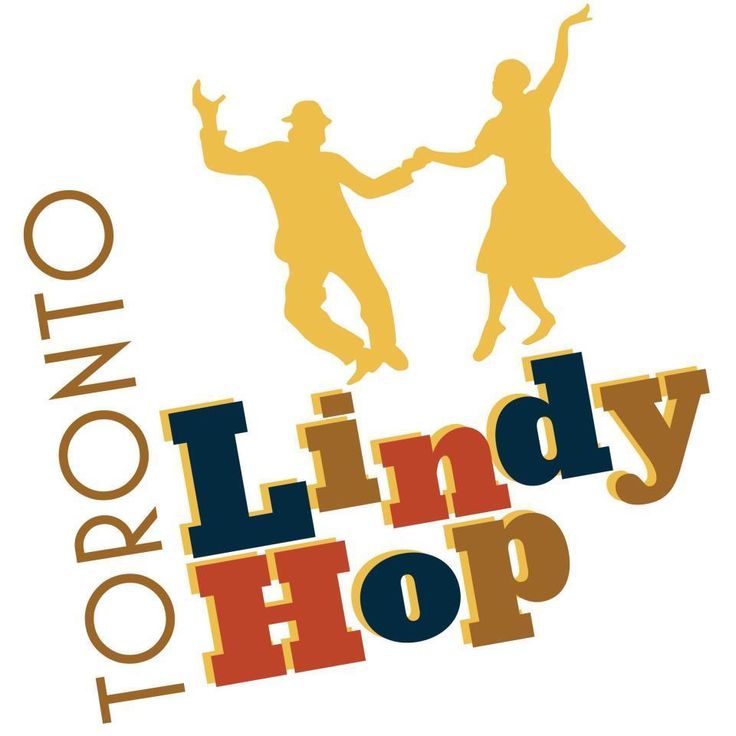 Carry on a dialogue, and do not try to teach her. Otherwise, the dance may still work out even if the partner is talking all the time, but, in my opinion, it's just impolite.
Carry on a dialogue, and do not try to teach her. Otherwise, the dance may still work out even if the partner is talking all the time, but, in my opinion, it's just impolite. The only thing you can't control, no matter how much you want to, is how well your partner follows her basic principles. Don't forget that you, as a partner, are responsible for working with her skill set. First of all, the partner should think about what both of them can do in a pair, and not about what he himself can do.
If the partner does not keep the direction, does not give a counterbalance, does not feel the rhythm, the partner will not do anything about it. If the partner does not work, there will be no movement - and if you insist, it will be unpleasant. Be patient. You may not be able to show everything that you can do in a pair. Create beauty together and take care of yourself and her.
The last principle is, in fact, the culmination of the first two principles.
Momentum is what happens when one body responds to the movement of another.
Over time, you will feel how it works. I like the following analogy: momentum is the people who go in and out of the house after the building is completed. This is the final stage: the foundation is ready (rhythm), the walls and roof (figures) are ready, and now the settlement is to be done.
After we pay attention to the rhythm and begin to execute the figures, we simply explain how the impulse works. There is no need to teach people how to make impulse work.
Here, for example, gravity brings us back to the ground after a jump.
How to teach a person to jump? Rhythm: you need to bend your knees. Figures: you can help yourself with your hands. Impulse: and gravity will bring you back by itself.
Simple causation. If a misunderstanding arises in a couple, this is usually due either to the fact that the partner and partner forget about the specifics of their roles, or to the fact that the partner and partner grow and develop in different directions.
What is happening is very interesting to watch. I can simultaneously show the same figures to people who already have experience in swing dancing, and to completely new people. And in many cases, those who know less about swing understand the fundamental principles better and apply them without hesitation. It's like giving a smartphone to a child or an adult for the first time.
And this is not surprising. The fact is that if you focus on those things that will be discussed next, and forget about the fundamental principles, then it will become more difficult to transfer energy within a couple.
Musicality, syncopation, intensity, style, turns in all their manifestations - this is only a small part of the dance subcategories. It is not necessary to perform them, the dance will work without them. And if you think only about them, and not about your basics, then interacting within a couple will most likely not work.
For example, you want to learn how to ride a bicycle.
 And you immediately begin to learn how to jump on the curb, perform tricks. Yes, you can, but you will initially do everything wrong. I can take people from the street and teach them to keep the rhythm and that's it - and after two dances it will seem that they know how to dance. They know what rhythm is, and the partner moves and invents figures, creates an impulse for the partner. They don't know how to control the energy they take in, they don't know that they have to keep moving until the energy runs out or something changes, and that's okay. These are social dances, and when we teach them, we explain all this.
And you immediately begin to learn how to jump on the curb, perform tricks. Yes, you can, but you will initially do everything wrong. I can take people from the street and teach them to keep the rhythm and that's it - and after two dances it will seem that they know how to dance. They know what rhythm is, and the partner moves and invents figures, creates an impulse for the partner. They don't know how to control the energy they take in, they don't know that they have to keep moving until the energy runs out or something changes, and that's okay. These are social dances, and when we teach them, we explain all this. But even without that, I can make people dance.
Rhythm, shapes and momentum are as important to swing as pedaling, steering and balance are to riding a bike.
If the lady performs the figures and does not fall into the rhythm, she will most likely step too wide, will not be able to keep the body over her legs, and it will be difficult for her to understand how much energy to give.
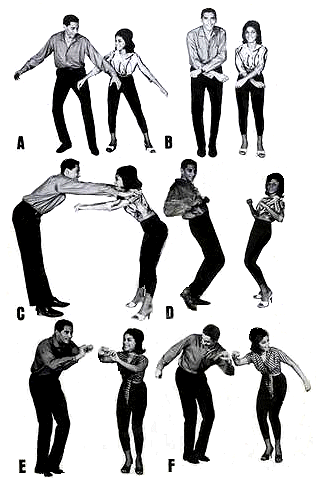 This is not the case with all partners, of course. But with the majority, it is. Imagine that the house stands on an unreliable foundation. I would be nervous.
This is not the case with all partners, of course. But with the majority, it is. Imagine that the house stands on an unreliable foundation. I would be nervous. Rhythm helps the partner feel gravity. And if you want to learn how to dance fast, then gravity is your first friend. You move as gravity allows you to. Try jumping rope without bending your knees and see.
If the partner leads incomprehensibly, the partner is nervous, because she depends on the partner, and he decides where the couple is moving on.
If the partner does not walk along the line, having received energy, and does something else, the partner has to protect her, and not dance with her. The partner will be able to keep everything under control, but over time, lack of clarity will lead to the fact that discontent and irritation will accumulate inside.
The partner who impatiently tries to get the partner to perform the figure - instead of performing the figure with her as a single organism - simply misses all the beauty and endless possibilities of causation.
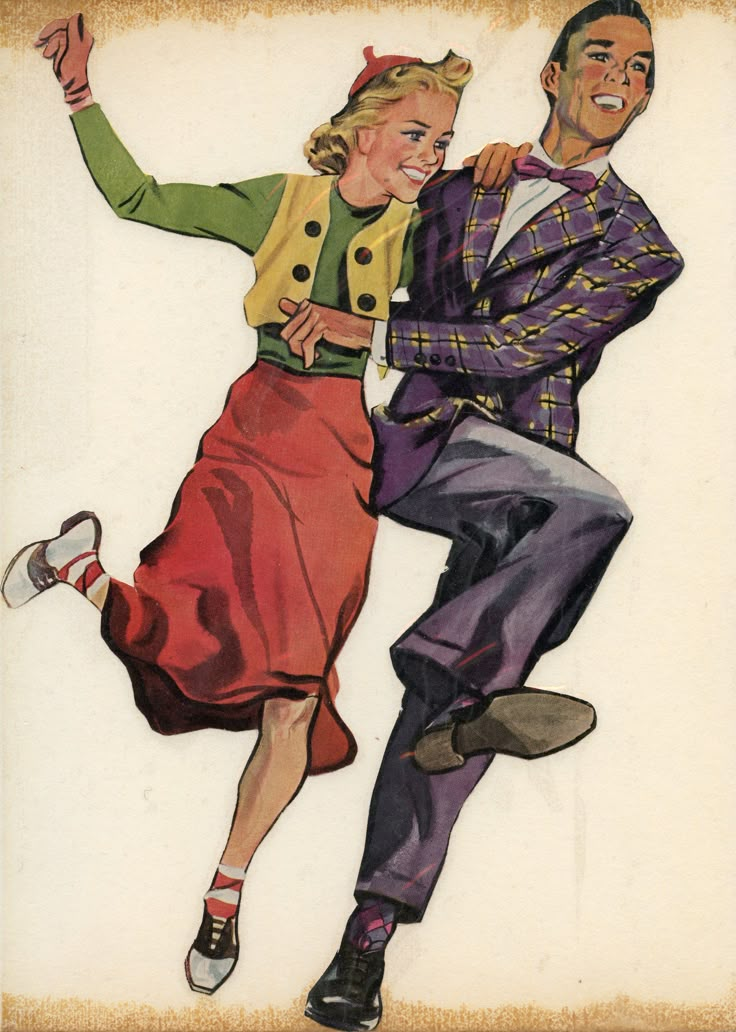
And so on and so forth.
This whole knot of futility and complexity is unraveled when the couple turns their attention to fundamental principles and both stop blaming each other.
I explain these principles to each group because I expect my students to become Lindy Hop masters. For me, they are all beginners. They become masters the moment they apply these principles. The only difference between them and experienced dancers is that the latter apply the principles more effectively.
I never think the principles are known for sure. Wherever I go, I repeat them over and over again, and whenever the principles are understood, I see the result.
Beginners and experienced dancers who want to improve their performance - they just start applying the basic principles and they reach the goal. Those who ignore the simplicity and insurmountability of the basic principles are like builders who build a building on a “whatever it takes” principle. First, everything should be planned on paper, and then put into practice.
 Not vice versa. First the foundation, then the roof. Not vice versa.
Not vice versa. First the foundation, then the roof. Not vice versa. To learn how to dance quickly, you need to dance with those who better understand and apply the basic principles. If not, it is the blind leading the blind. We are all in school, just in different classes. There are those who came to dance before you. There are those who came only yesterday. You are affected by everything that happens around you. Do you understand the basics better than some newbie? Go and dance with him .
Maybe you are already an intermediate level and want to dance even better. Then invite to the dance someone who knows the basics better than you.
Or maybe you are an experienced dancer and teach beginners. And you lead them through all that difficult path to perfection that you yourself went through without understanding these basics.
Now I have shown you an easier way. Try it differently. Show them the basics and let them grow on their own.
 I warn you: they will grow faster than you. So do not be offended and do not envy. Be proud of them, help them grow faster and teach others. You don't know in advance what this or that person will bring to swing in the future.
I warn you: they will grow faster than you. So do not be offended and do not envy. Be proud of them, help them grow faster and teach others. You don't know in advance what this or that person will bring to swing in the future. When I teach dance, my goal is to teach students to dance faster than I learned myself, if they want to. If you explain the basic principles, your students will improve much faster depending on how they work. They will work on their mistakes and understand where is the main thing and where is the secondary, which can be painlessly adopted from others. And everything they learn additionally will add to their dance of individuality, without taking anything away.
I'm looking forward to your feedback and stories about how many experienced dancers have appeared in your community!
Source
Translation: Anastasia Besman, 2015
-
-
-
Wedding dance
-
Wedding dance performance in the style of rock and roll, retro, vintage or hipsters (Charleston, Lindy Hop, boogie-woogie, rock and roll, blues).
 The most important day you will remember for the rest of your life!
The most important day you will remember for the rest of your life!
-
December 2022 | ||||||
|---|---|---|---|---|---|---|
| Mon | W | Wed | Thu | Fri | Sat | Sun |
| one
• • • | 2
• • | 3
• • | 4 | |||
| 5
• • • | 6
• • • | 7
• • • | eight
• • • | 9
• • | ten
• • | 11 |
| 12
• • • | 13
• • • | fourteen
• • • | fifteen
• • • | 16
• • | 17
• • | 18 |
| 19
• • • | twenty
• • • | 21
• • • | 22
• • • | 23
• • | 24
• • | 25 |
| 26
• • • | 27
• • • | 28
• • • | 29
• • • | thirty
• • | 31
• • | |
What is Lindy Hop?
Ph: Gregor Hofbauer
What is Lindy Hop? A big interview with the champion of Russia in Lindy Hop and Boogie-Woogie Maria Filippova
This year, like many of my compatriots, I did not go abroad, although I planned very much. In principle, nothing tragic, not the first year like this, but still a little insulting. And who really should be offended is those whose work activity was completely connected with traveling to different countries, and the closure of borders made their work simply impossible. But the champion of Russia in Lindy Hop and boogie-woogie and an international teacher Maria Filippova does not even think to lose heart and restructures her activities in the new reality.
In principle, nothing tragic, not the first year like this, but still a little insulting. And who really should be offended is those whose work activity was completely connected with traveling to different countries, and the closure of borders made their work simply impossible. But the champion of Russia in Lindy Hop and boogie-woogie and an international teacher Maria Filippova does not even think to lose heart and restructures her activities in the new reality.
Once, when she was still a teenager in Yaroslavl, she became interested in swing dancing after watching "Dandies", and this hobby completely changed her life. Today she tells Plyas about what Lindy Hop is and why she preferred it to boogie-woogie, about trips to different countries with master classes, and also about how a Russian student differs from a European one.
Get nostalgic with us for the times when you could go to events with a lot of people and fly to other countries.
December 11, 2020
Ph: Ekaterina Knyazeva
What is Lindy Hop?
What is Lindy Hop?
– It seems to me that today the Lindy Hop is not yet as popular as other social dances, but in recent years it has been gaining momentum.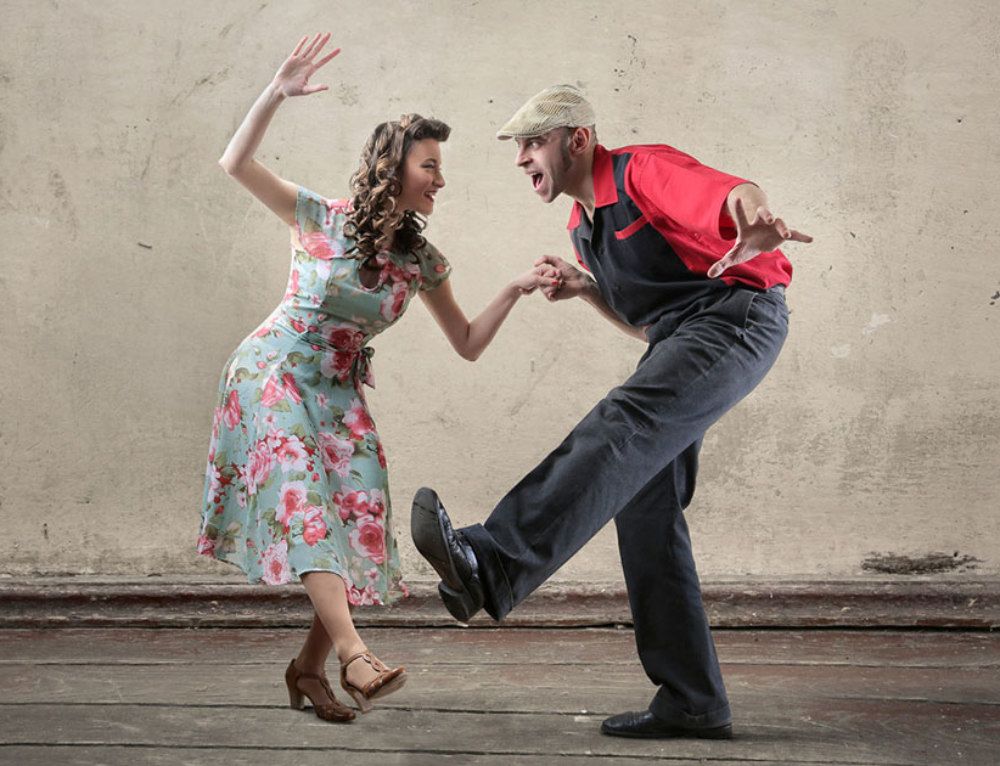 Tell me briefly, what kind of dance is this? And how are the classes going?
Tell me briefly, what kind of dance is this? And how are the classes going?
– The Lindy Hop is an African-American dance that originated in New York City in the 1920s and 30s in the wake of the popularity of jazz, and since then it has been danced by people all over the world. The main features of the Lindy Hop are the rhythmic basis, improvisation and freedom of expression in a pair. In this pair dance there is no such rigid distribution of roles as, for example, in ballroom dances, and a person of any gender can be the leader.
There is always a rotation in the Lindy Hop class - changing partners, because it is important that everyone dances with everyone, because when you dance with only one partner, you get used to it and you can no longer dance with someone else.
Lindy Hop is a social dance, which means that people learn it like another language. The purpose of attending classes is to learn how to express yourself in dance, so that later you can communicate with different people at parties, concerts and festivals.
– How much study do you need to start going out to parties?
- I recently conducted a series of master classes for people without dance training in the Ziferblat space. The experience of Ziferblat showed that in half an hour after the start of the lesson, people are already ready to dance. Lindy hop is, first of all, a rhythmic dance, it is important not how you look on the dance floor, but how you feel yourself, how you interact with your partner and what rhythm you keep. And the basic rhythm can be learned pretty quickly. On average, after 2 weeks or a month of classes, you can go to a party. But in general, there will never be an ideal moment and there is no absolute “scale of readiness for a party”, you can go and practice the acquired knowledge even after the first lesson.
“
Lindy HOP - Social Dance, this means that people teach it as another language - - - - - - - - - - - - - - - - - - - - - - - - - - - - - the aesthetics of this dance are a little surprising, in particular, it is embarrassing that the sock is always pulled over itself, and not stretched out, as is usually taught in classical dances.
- In general, the aesthetics of these dances for us - Russians - is incomprehensible, and very often, when people see them for the first time, they can characterize the dance as asymmetrical or even ugly, simply because they are not used to it. This is not ballet or classical choreography, this is an American folk dance. Dancers do not have the task of being beautiful in the sense in which we think when we are taught the classics in childhood.
Lindy Hop teaching vs . pandemic
Lindy hop teaching vs . pandemic
– The dance industry is going through hard times right now. Tell us what your work schedule looked like before the whole pandemic thing? Have you taught mainly in Europe?
- It all started with regular groups in Moscow, then my partner Daniil Nikulin and I started to travel around Russia with mother classes, later we were invited to festivals abroad, and gradually we began to teach in other countries.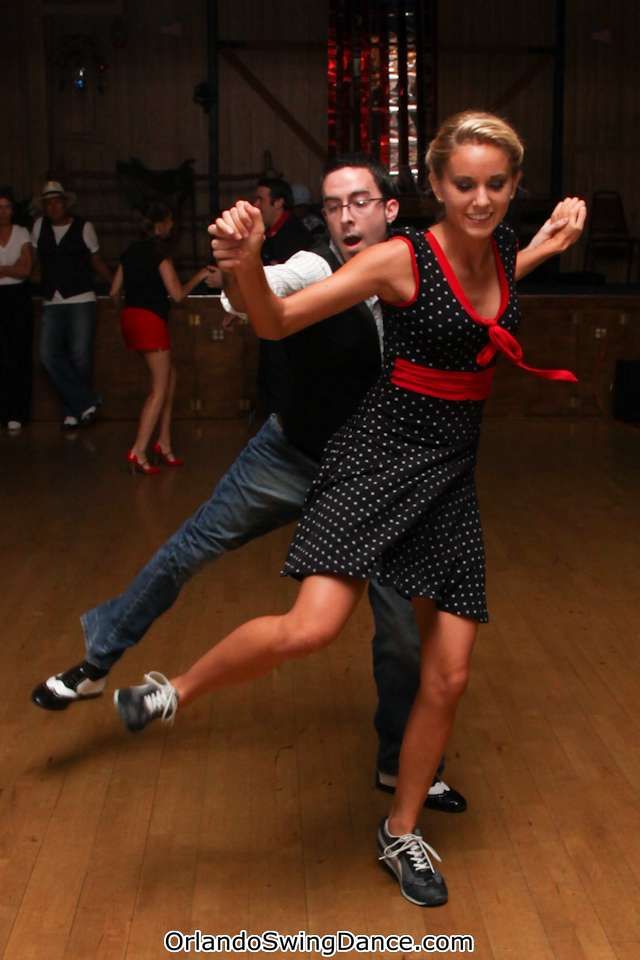 As a result, Lindy Hop master classes, performances and judging at festivals around the world have become our main area of activity. And surprisingly, when we started teaching abroad, we were much less invited to teach in Russia.
As a result, Lindy Hop master classes, performances and judging at festivals around the world have become our main area of activity. And surprisingly, when we started teaching abroad, we were much less invited to teach in Russia.
– Teaching around the world as my main job – is fantastic for me. So the Lindy Hop is so interesting to people all over the world that every week there was some kind of event?
– Yes, Lindy Hop is very popular today in many countries. Before the pandemic in the world - in Europe, Asia, America - every weekend there were an average of 2-4 events of various sizes related to Lindy Hop. It could be both small festivals with up to 100 participants, and large ones with several thousand dancers, as well as various master classes and workshops, dance camps. Lindy hop dancers came to such events from different cities, countries and even continents.
We were invited to such events as teachers, judges and artists.
My job was to come to the festival, where hundreds of people from all over the world gather in one closed room, dance with each other, communicate, hold hands, do not keep their distance :). Being in 2020, this is already very difficult to imagine as the norm. I'm afraid to make predictions for the future, but so far there are practically no festivals. All events for this year have been postponed. And I think this is just the beginning.
– How did you manage the lockdown and what did you do afterwards?
– In the spring I was in Yaroslavl and spent time with my family. I haven't been in my hometown for such a long time, probably since high school. In Yaroslavl, I often visited nature, from new activities - I began to learn French.
I didn't want to take online classes as soon as the quarantine started, simply because I needed time to relax, and the online space was already very crowded with activities. In the middle of summer, I filmed my first online course for already dancing people, Lindy Hop Cheat Sheet. And in the fall, I opened small Lindy Hop and solo jazz groups for beginners in Moscow.
– Tell us about dance camps. What it is? Something like a camp?..)
What it is? Something like a camp?..)
– Not really, because Lindy Hop is primarily about communication, not about achievements and a sport in which it is important to keep fit and win. Lindy Hop camps are quite common in Europe, one of the largest and most famous "Herrang Dance Camp" is located in Sweden. Imagine, every summer hundreds of dancers come to a small village near Stockholm. Everyone lives together, goes to classes, dances, plays music and just has a good time in the company of like-minded people. The camp lasts 5 weeks, and the course of classes on one topic is designed for a week. Accordingly, every week new people come there and some of the old ones leave, the same with teachers.
But besides Herrang there are many other festivals in the world that I would recommend visiting. For example, Lindy Shock in Budapest, Lindy Focus in Asheville US, Paris Jazz Roots in Paris, and this is just the beginning of the list.
By the way, similar events are also held in Russia. For example, every year from January 3 to 8, you can get to the "Moscow Christmas Swing Dance Camp". The camp "breaks up" in a hotel 30 minutes by car from Moscow. You can come to it only for the evening part - parties with live music, competitions, performances, or you can drop in with accommodation. Then the whole day will be filled with classes, and not only Lindy Hop, but you can also learn how to dance balboa, boogie-woogie, solo jazz and much more. I have been going to this camp for 10 years in a row, I started as a participant, and for the last 4 years I have regularly replenished the ranks of teachers. Speaking of teachers, the organizers invite about 20 pairs of foreign teachers from all over the world. So you can not only enjoy the special spiritual atmosphere of this camp, but also learn a lot :)
For example, every year from January 3 to 8, you can get to the "Moscow Christmas Swing Dance Camp". The camp "breaks up" in a hotel 30 minutes by car from Moscow. You can come to it only for the evening part - parties with live music, competitions, performances, or you can drop in with accommodation. Then the whole day will be filled with classes, and not only Lindy Hop, but you can also learn how to dance balboa, boogie-woogie, solo jazz and much more. I have been going to this camp for 10 years in a row, I started as a participant, and for the last 4 years I have regularly replenished the ranks of teachers. Speaking of teachers, the organizers invite about 20 pairs of foreign teachers from all over the world. So you can not only enjoy the special spiritual atmosphere of this camp, but also learn a lot :)
Of course, it’s all very hard to imagine now, but that’s how it was ☺
“
Lindy Hop is primarily about communication, and not about achievements and sports in which it is important to keep fit and win
Ph: Gregor Hofbauer
– What countries were invited to more often, and where less often? Where is Lindy more popular and where less?
- It is very difficult to say for sure where the Lindy Hop is more popular and where it is less.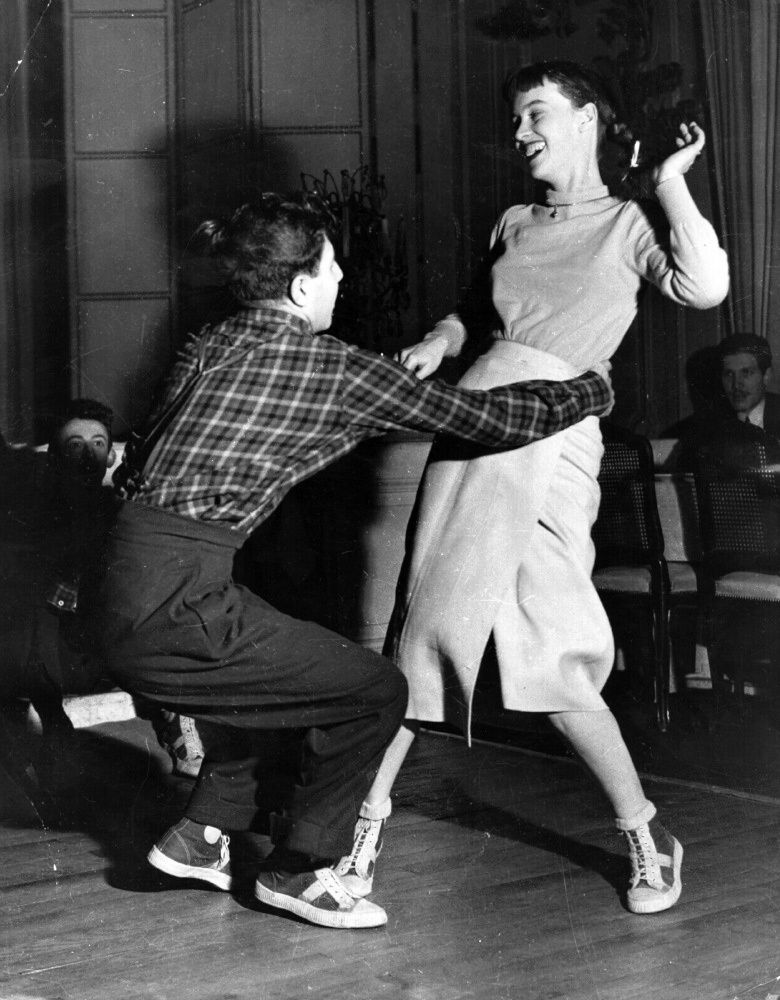 All Europe, Asia and America are actively dancing it.
All Europe, Asia and America are actively dancing it.
Speaking about my teaching outside of Russia, over the past few years I have traveled to 19 countries around the world as a visiting teacher. It so happened that my partner and I are most often called to France. I don't know why there. It happens that in a short period of time different organizers from one country begin to call us. So, for example, I visited Poland three times in six months and had to go to Italy and Bulgaria, but 2020 made its own adjustments.
The most distant places where I have taught are Buenos Aires - Argentina, Guangzhou - China, Seoul - Korea.
– Is there a difference between a European student and a Russian student?
- Yes, and it's quite tangible. In Russia, in general, people are used to the fact that when they go to school, they silently absorb knowledge, sitting at their desks, and if they want to ask or say something, they raise their hand, and then, perhaps, they are given a chance to participate in the course.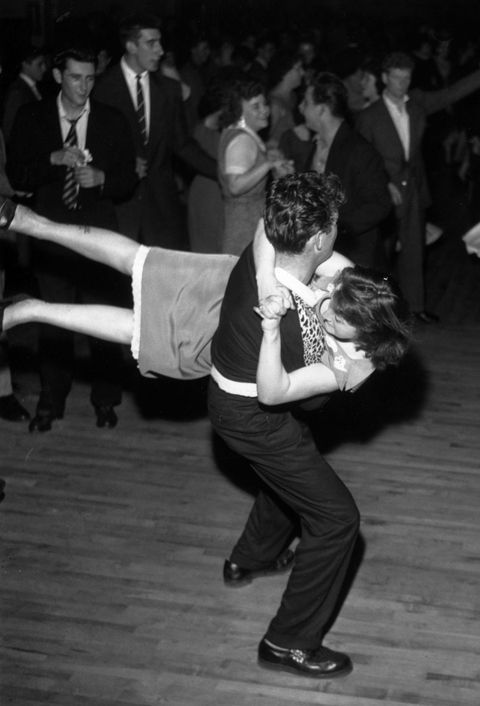 lesson. At the same time, the teacher has such a status that it is impossible to conduct a dialogue with him on an equal footing. This is probably why it is more difficult to build communication on an equal footing with Russian students in a lesson than with Europeans. In this case, I usually say: “Dear friends, I am not a TV! Please talk to me in class. Give feedback and answer questions, because it will be better for all of us!” And only then they begin to slowly relax and participate in the dialogue. The emotional return during classes in Russia is not as high as, for example, in the same France. But at the same time, Russian students are very diligent and hardworking. Often during the lesson it is difficult to determine something by their facial expression, but after that they come up and thank you very sincerely for the lesson.
lesson. At the same time, the teacher has such a status that it is impossible to conduct a dialogue with him on an equal footing. This is probably why it is more difficult to build communication on an equal footing with Russian students in a lesson than with Europeans. In this case, I usually say: “Dear friends, I am not a TV! Please talk to me in class. Give feedback and answer questions, because it will be better for all of us!” And only then they begin to slowly relax and participate in the dialogue. The emotional return during classes in Russia is not as high as, for example, in the same France. But at the same time, Russian students are very diligent and hardworking. Often during the lesson it is difficult to determine something by their facial expression, but after that they come up and thank you very sincerely for the lesson.
At the same time, I remember that earlier, before all my trips abroad, I was very comfortable teaching at the Moscow Christmas camp, but my European friends who taught there sometimes came up to me and asked: “Why are the students so serious, why is no one smiling during class?” I answered that everything is fine, they are just focused on the material. And when I was in this camp for the last time, I was already worried that no one was smiling. Apparently, I was already so accustomed to the European mentality that at the first lesson the contrast was too bright for me.
And when I was in this camp for the last time, I was already worried that no one was smiling. Apparently, I was already so accustomed to the European mentality that at the first lesson the contrast was too bright for me.
Another story about the difference in mentalities.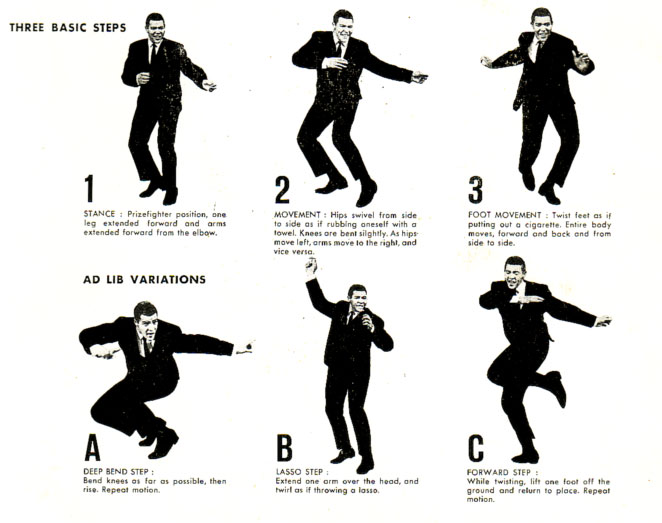 In Spain, after changing partners in a class, people often have long, loud conversations with the new person. They say hello, find out how things are going, maybe they tell something else about themselves. The culture of small talk is well developed there. And that's great, because people come to dances to talk and spend time, because for them it's part of the culture, but for me, as a teacher, it was very unexpected at first. Changing partners is such a quick technical moment to get everyone to try new stuff with everyone, and when the room starts buzzing and long conversations, everyone gets a little distracted. There were similar situations in France and Italy, but here in Russia everything is a little different, and those who come to dance classes more often want to compete and win, improve their technique. Whereas in many European countries people come just to chat! Well, dance a little.
In Spain, after changing partners in a class, people often have long, loud conversations with the new person. They say hello, find out how things are going, maybe they tell something else about themselves. The culture of small talk is well developed there. And that's great, because people come to dances to talk and spend time, because for them it's part of the culture, but for me, as a teacher, it was very unexpected at first. Changing partners is such a quick technical moment to get everyone to try new stuff with everyone, and when the room starts buzzing and long conversations, everyone gets a little distracted. There were similar situations in France and Italy, but here in Russia everything is a little different, and those who come to dance classes more often want to compete and win, improve their technique. Whereas in many European countries people come just to chat! Well, dance a little.
I remember that my partner and I had another funny experience. Somehow we taught in Germany, and then we went to China with master classes and at the first lesson we decided to give about the same concept that was recently given in Germany.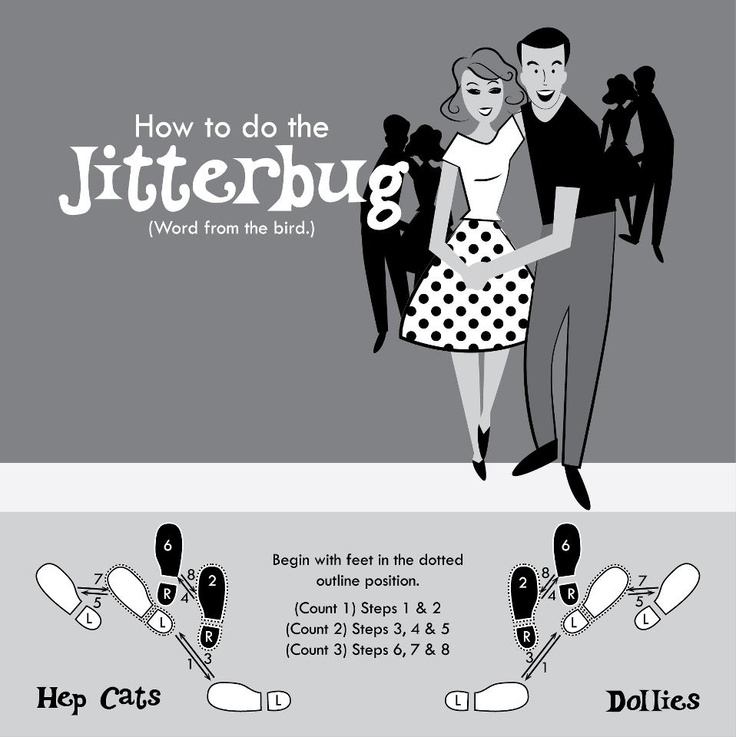 When we started the class, we immediately realized that something was wrong, and students in China understand us much worse than the Germans. I had to change everything at once and give more illustrative examples without using the usual explanations in English. As a result, everything went well, the students understood everything, we explained everything and even gained new experience in teaching, knowing the contrast between the analytical approach and the visual-illustrative one.
When we started the class, we immediately realized that something was wrong, and students in China understand us much worse than the Germans. I had to change everything at once and give more illustrative examples without using the usual explanations in English. As a result, everything went well, the students understood everything, we explained everything and even gained new experience in teaching, knowing the contrast between the analytical approach and the visual-illustrative one.
“
Emotional return during classes in Russia is not as high as, for example, in France. But at the same time, Russian students are very diligent and hardworking
Lindy Hop vs . boogie woogie
lindy hop vs . boogie-woogie
– Before joining Lindy Hop, you practiced boogie-woogie and even became the champion of Russia in this style. Can you tell us how you got over from it to the Lindy Hop?
Can you tell us how you got over from it to the Lindy Hop?
– Dancing appeared in my life as a child. I started going to various variety dance classes from the age of 8, and I decided to go to boogie-woogie after I watched the movie "Dandies", then I was 15 years old. At that time, my parents were doing Argentine tango in a club in Yaroslavl, and boogie-woogie classes were taking place in the next hall. My first boogie-woogie teacher was Sergey Strunin from the SwingTown club, and since then I have been doing swing dancing for over 10 years.
Boogie-woogie is really well developed in Yaroslavl. Even at the Russian level, often the winners of boogie competitions are Yaroslavl. There is a very active dance party there, even now, when I come to visit and look into SwingTown, I always get great pleasure from parties, dancing and communication.
A little more history. Having started boogie dancing in 2009 in Yaroslavl, I quickly started performing at competitions, assisting local teachers, going to all the parties in the city and even flying into the metropolitan ones.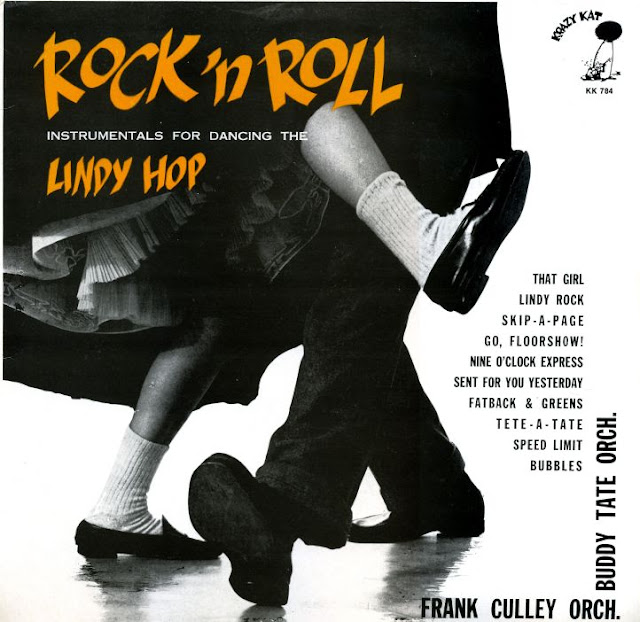 Entering Moscow in 2012, as if by magic, I was invited by one of my friends to teach boogie-woogie together, and by others - to perform at the next competitions. And then everything began to spin: training, performances, an active creative life. Daniil and I became champions of Russia in boogie-woogie in 2015 (and in lindy hop in 2016), and at the moment we have been dancing together with him for 8 years.
Entering Moscow in 2012, as if by magic, I was invited by one of my friends to teach boogie-woogie together, and by others - to perform at the next competitions. And then everything began to spin: training, performances, an active creative life. Daniil and I became champions of Russia in boogie-woogie in 2015 (and in lindy hop in 2016), and at the moment we have been dancing together with him for 8 years.
At first, I looked askance at the Lindy Hop. I also didn't understand its aesthetic, the jazz music seemed dull and too abstract compared to the fun and simple rock and roll, and the dancers seemed uncomposed compared to the boogie-woogie athletes. But around 2013-2014 my friends started going to lindy parties and I decided I should try with them too. A few months later, I got involved in the Lindy party in Moscow, and even started performing at Lindy Hop competitions, getting high marks only because Daniil and I had already danced to boogie competitions and used this experience in Lindy.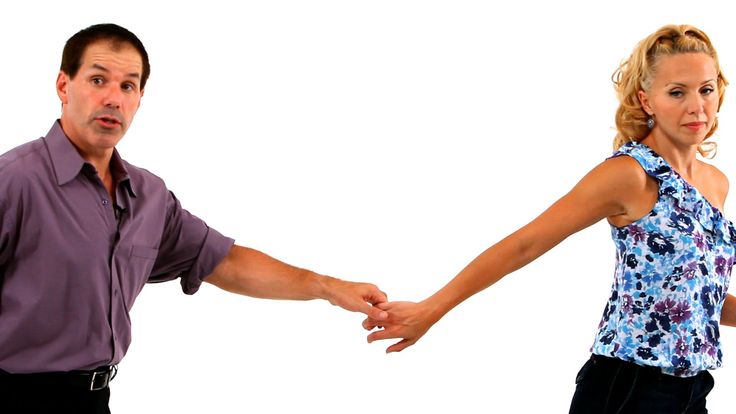 Looking at those performances now, I can hardly call that dance a Lindy Hop, rather we parodied it, remaining with the boogie-woogie technique. But, apparently, it rolled, because we began to regularly appear in the finals of Russian competitions.
Looking at those performances now, I can hardly call that dance a Lindy Hop, rather we parodied it, remaining with the boogie-woogie technique. But, apparently, it rolled, because we began to regularly appear in the finals of Russian competitions.
– Why did you decide to leave boogie-woogie completely?
- Having danced 4 seasons in a row in boogie competitions (and celebrated 7 years in boogie woogie), I felt that there was no room to grow further. We became champions of Russia, it was unreasonably expensive to go to world competitions, and the very idea of competitions ceased to attract me. If I become the champion of Europe or the world, for example, after spending a lot of time and effort, what next? I think that the problem of sports is that there are specific criteria and seemingly understandable goals, having reached which you break your vision, and - which is the worst thing for me - you don’t understand where to go next.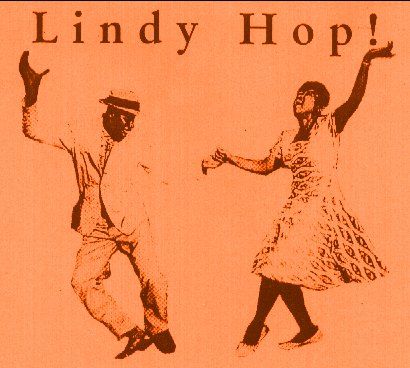
Art is completely different. There are no points and ratings in it, only an idea and an embodiment. Here you can dig endlessly and in any direction. That's why we decided in 2016 that it was enough to dance boogie-woogie in competitions. I have never regretted it yet :)
Now the sports component of boogie-woogie is gradually eating away at the social one. And it seems to me that when there is sport and rules, when you don’t dance how you feel and don’t perceive dance just as an art, when you have points and qualification cards, there is less improvisation and less yourself in the dance. You start to look at what needs to be done, focus on the champions, and in the end all the dancers become similar to each other.
Plus the boogie-woogie music is very high quality, but the same. And jazz for me is much more diverse, even endless. Lindy Hop is also attractive in that it has much more freedom for partners. The dance is built in such a way that both partners equally influence it, I listen to each other.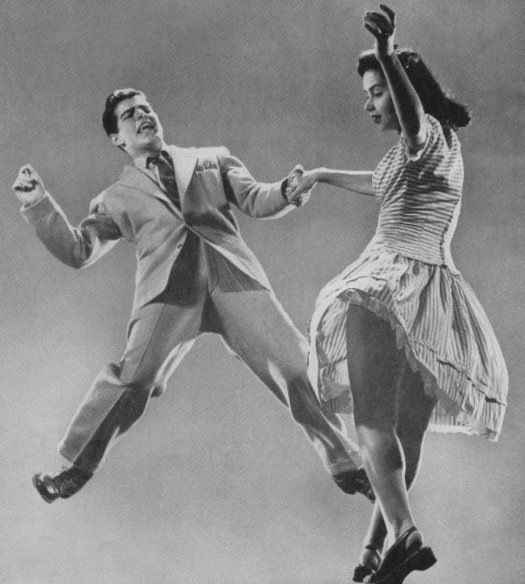
“
Now the sports component of boogie-woogie is gradually eating away at the social one. And it seems to me that when there is sport and rules, when you don’t dance how you feel and don’t perceive dance just as an art, when you have points and qualification cards, there is less improvisation in dance and less yourself
Boogie Woogie Partnership vs .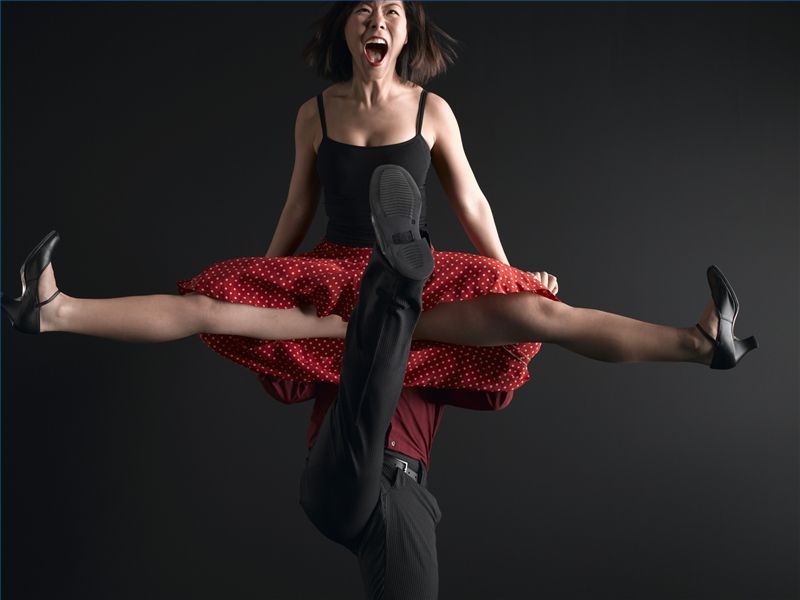 lindy hope partnership
lindy hope partnership
boogie woogie partnership vs . lindy hope partnership
– Let's get back to the topic of finding a partner that I love to discuss. It's unusual for me to hear that in Yaroslavl, a provincial city, it's so easy to find a partner in not the most popular dances, while in Moscow it's not always possible to pair up in more popular styles. How did you find them?
– Let's start with the fact that in boogie-woogie classes there is a rotation, a change of partners. And from the very first lesson in Yaroslavl, we were approximately equal. I remember that the teacher simply put me in a pair with my first partner, and we met with the next ones at a party and agreed to perform on our own.
Finding a partner in boogie-woogie, lindy hop and other social dances is not about posting an ad on Avito in the style of “looking for a partner”.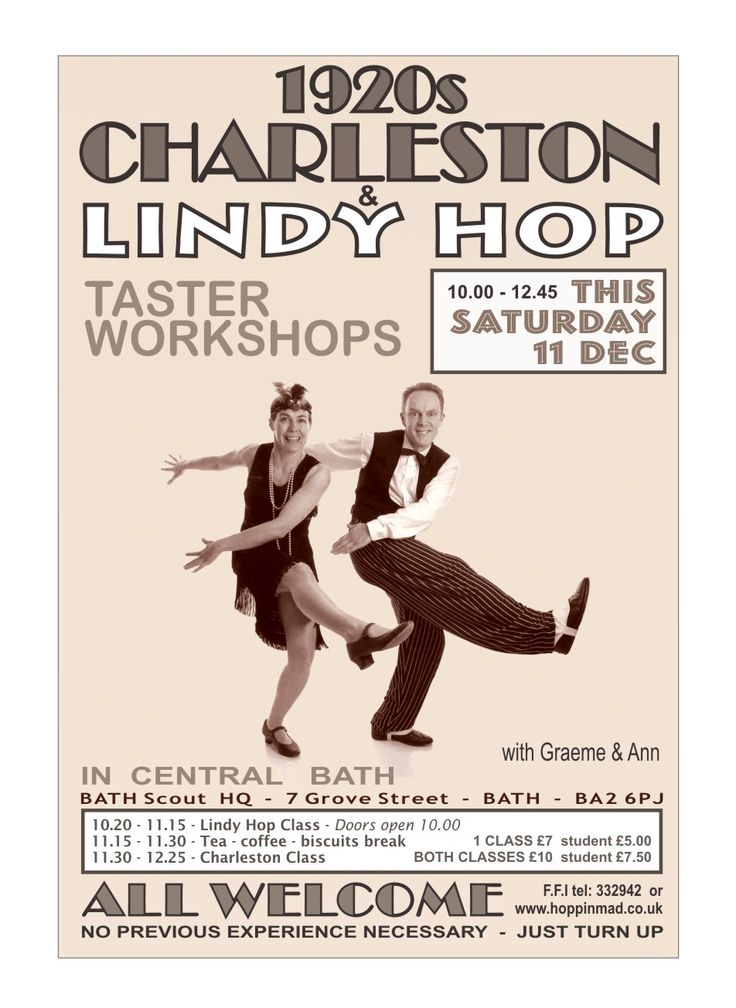 A partner is always someone from your circle of friends, acquaintances, this is someone with whom you danced at parties, you are usually from the same company, go to cafes and discuss dances. Social dancing is first and foremost about the community.
A partner is always someone from your circle of friends, acquaintances, this is someone with whom you danced at parties, you are usually from the same company, go to cafes and discuss dances. Social dancing is first and foremost about the community.
By the time I moved to Moscow, I had already established social connections in the capital, because the whole 11th grade I went to parties or just to hang out together. And also guys from other cities went to see me in Yaroslavl, if we had some kind of festivals or competitions. In these connections there is a great value of our dances.
As for my successful search for a partner, I must have just been lucky. Whenever I wanted to perform or develop with someone, there were people I could pair up with. I did not have long periods in my life when I was specifically looking for a partner.
– What about the men in Lindy Hop? (By the way, this is another one of my favorite topics)
– What is unusual is that often in our classes with Daniil in Moscow, if there is a preponderance, then there are more men than women.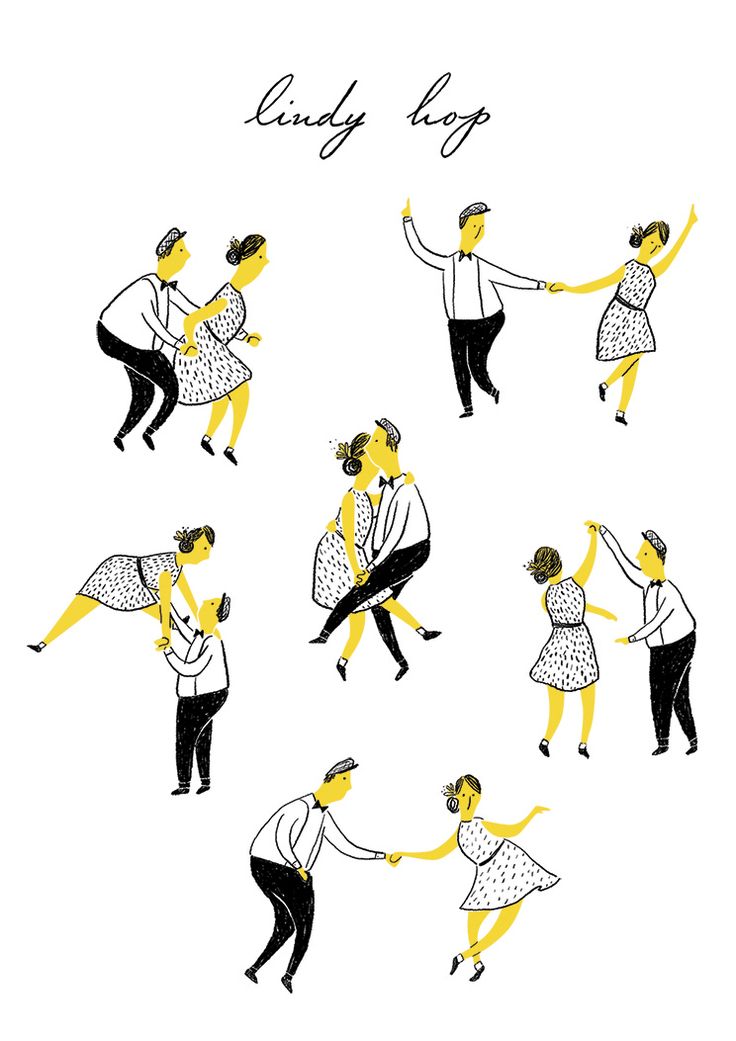 We do not have such that if you are a man - you definitely only lead, and if there is a woman - you follow, gender does not matter as much as in ballroom dancing (as far as I can judge ballroom dancing from the outside). There is follower and the leader of (follower and leader), and the person himself chooses in which role he dances now. It will be completely normal if at a party a girl invites a girl, and a guy invites a guy. Maybe somewhere in the depths of Russia this is still perceived by someone a little unusual, but in other countries it is taken for granted.
We do not have such that if you are a man - you definitely only lead, and if there is a woman - you follow, gender does not matter as much as in ballroom dancing (as far as I can judge ballroom dancing from the outside). There is follower and the leader of (follower and leader), and the person himself chooses in which role he dances now. It will be completely normal if at a party a girl invites a girl, and a guy invites a guy. Maybe somewhere in the depths of Russia this is still perceived by someone a little unusual, but in other countries it is taken for granted.
In class, to explain the concept of leading in Lindy Hop, I like to give this example: you can imagine that you met a friend or girlfriend, and he (she) knows the way to the cinema, but you do not, and you walk and talk . And he just confidently follows a familiar route, and it doesn’t matter what gender he is, it doesn’t matter if you hold hands, because if you are both involved in the process, for example, in a conversation, then you feel each other and will automatically follow him ( her).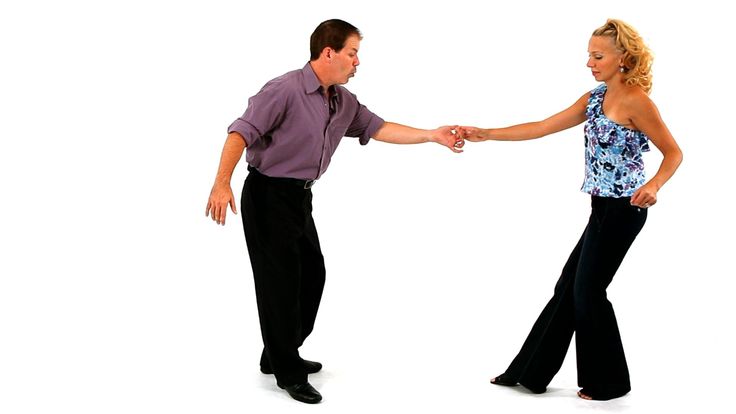 At the same time, if you want to buy a bun in a nearby store, you will move a little to the side, to the store, and a friend or girlfriend will follow you. It's never about gender and rules of conduct / record keeping, it's about being involved at a given moment in time. But when you are just learning, it is difficult to keep this balance, so first we learn one role, then, at a high level, almost everyone learns another.
At the same time, if you want to buy a bun in a nearby store, you will move a little to the side, to the store, and a friend or girlfriend will follow you. It's never about gender and rules of conduct / record keeping, it's about being involved at a given moment in time. But when you are just learning, it is difficult to keep this balance, so first we learn one role, then, at a high level, almost everyone learns another.
“
Finding a partner in boogie-woogie, lindy hop and other social dances is not about posting an ad on Avito in the style of “looking for a partner”. A partner is always someone from your circle of friends, acquaintances, this is someone with whom you danced at parties
- Do boy-boy and girl-girl pairs meet at major competitions?
- Yes, of course, there are not so many of them, but they exist, and among them there are teachers of international level.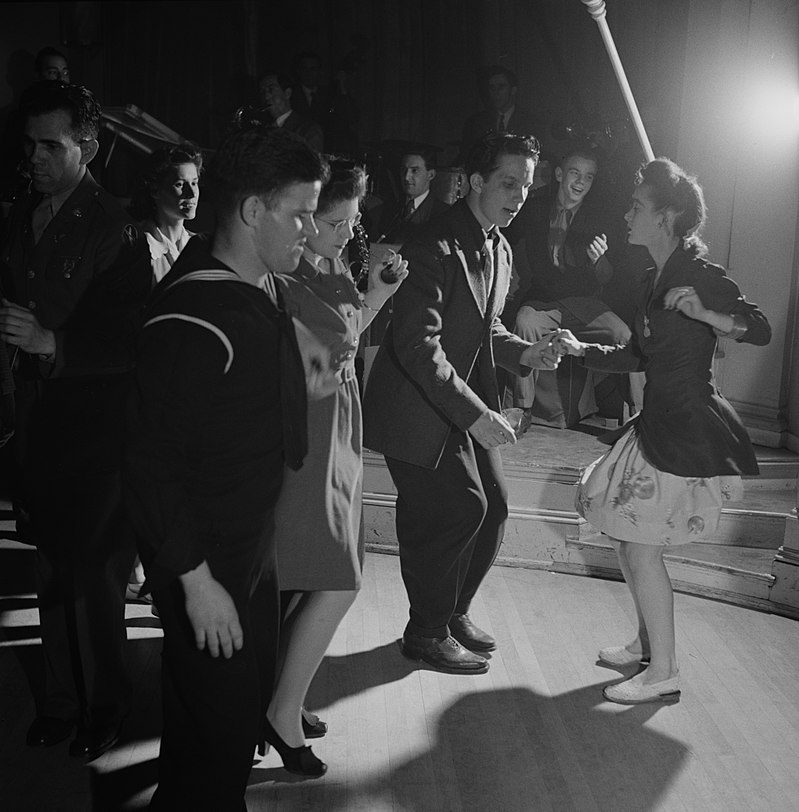 This is how they danced before, so it's not like a new ethic has come in and people of the same gender suddenly start dancing with each other.
This is how they danced before, so it's not like a new ethic has come in and people of the same gender suddenly start dancing with each other.
Lindy Hop competition
Lindy Hop competition
–
– In Russia and in Moscow in particular, several swing dance schools hold tournaments every year. At any competition, you can always find a category that suits you, even if you are a completely new dancer or you do not have a permanent dance partner.
In general, competitions are divided into two types: with your own partner and with a random one. Both formats have their charms. With your partner, it is easier to convey your vision of the dance to the audience and judges, there is time for preparation and synchronization in technique, but even in this case, couples, as a rule, do not prepare their performance completely.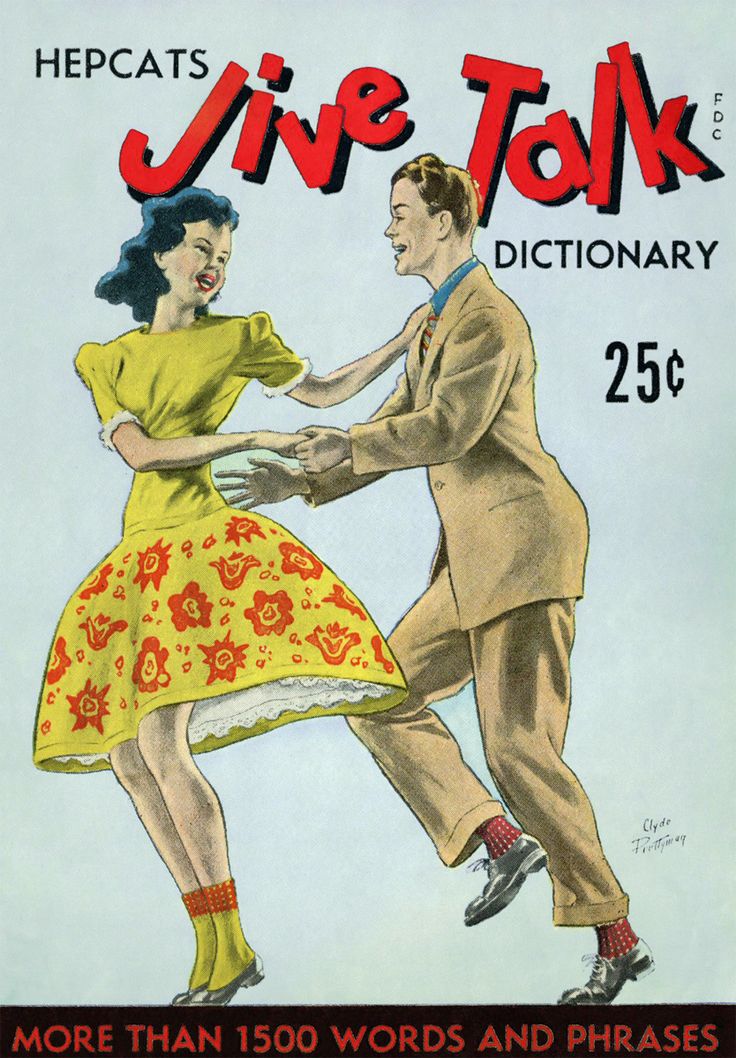 The main task is to show how you can improvise at the moment for specific music, and not brag about who has more blanks. But, of course, there are preparations, but as it seems to me now, they are not as valuable as the skill of improvisation.
The main task is to show how you can improvise at the moment for specific music, and not brag about who has more blanks. But, of course, there are preparations, but as it seems to me now, they are not as valuable as the skill of improvisation.
Coinciding with a person randomly, you never know what will happen, where the conversation will go in a competitive situation. That's the beauty of it.
– That is, there is no such thing that you come to a tournament with strictly measured compositions, where all elements and figures are calculated from and to?
– No, in tournaments all songs are played randomly. In the finals, the participants are usually told the approximate pace and duration of the exit, but they are not given what specifically awaits them. Of course, with your partner you can prepare all the exits “from and to”, for example, in the finals of major competitions, people do this, this is especially true for those who dance at high speeds.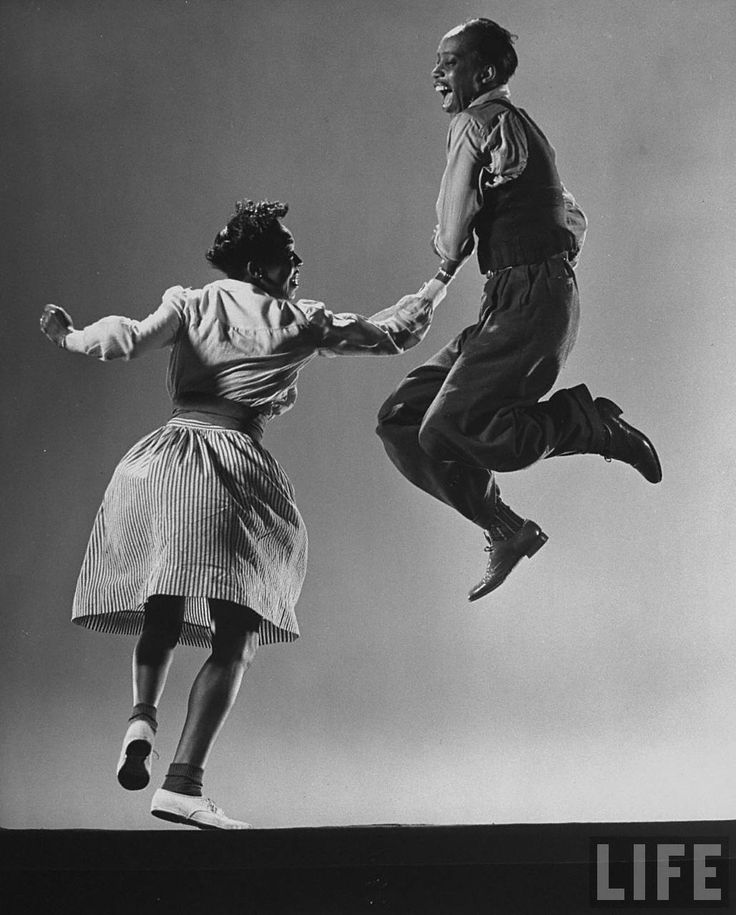 But I am not a supporter of fully prepared compositions.
But I am not a supporter of fully prepared compositions.
– How is the tournament judged, by what criteria?
- Lindy hop judges are invited to those people who have weight in the community. Usually these are experienced teachers and dancers, whom everyone respects and whose opinions are listened to.
In the finals, the judges give the participants not points, but places, and then the results are calculated using a special system. That is, everyone judges the dances based on their view of them and comparing those couples that came together in a particular final with each other. There are no general absolute criteria that are expressed in points.
“
At any competition you can always find a category that suits you, even if you are a completely new dancer or you do not have a permanent dance partner
Ph: Alexei Jukov
Lindy hop is a fun dance?
Is Lindy Hop a fun dance?
– It seems to me that all swing dancing is some kind of unbridled fun.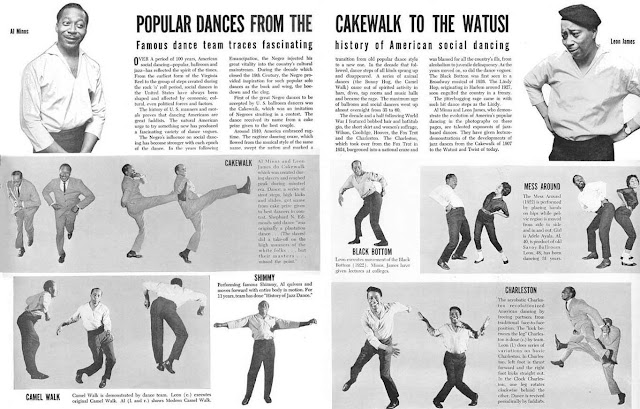 Why do they all look so funny?
Why do they all look so funny?
- I wouldn't take it as outright fun. Swing dances originated during the Great Depression, segregation, prohibition, in general, people had a hard life, and jazz was so fun, simply because it was impossible to do otherwise at that time.
Imagine this picture: Duke Ellington, Louis Armstrong, Ella Fitzgerald - insanely popular artists of the jazz era, comparable in level, for example, to Beyoncé, go on tour in America. They play in the best hotels and concert halls, get standing ovations and worship from the crowds, but they cannot stay in the same hotels where they perform or dine in restaurants, sitting next to their listeners. Simply because of the color of their skin and the terrible laws of the time in which they lived.
Jazz in general and swing dancing in particular have historically been part of the resistance culture. They came to dance, among other things, to escape from the problems in life.
Then no one taught anyone how to dance the Lindy Hop in the form in which training takes place now, there were no dance schools or clubs.





